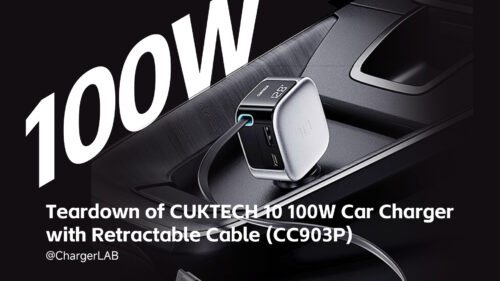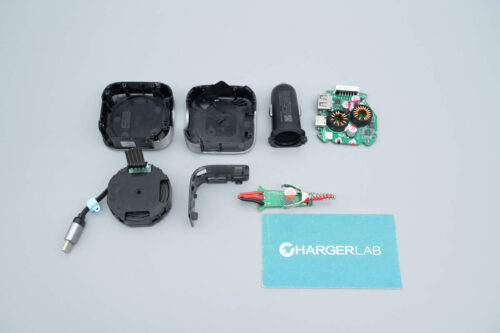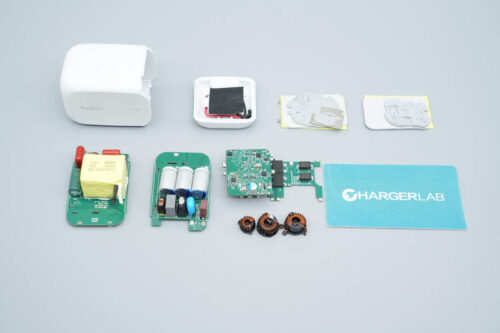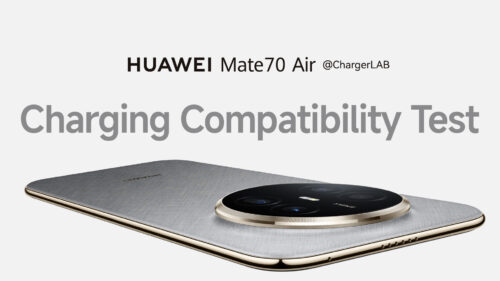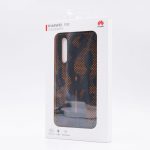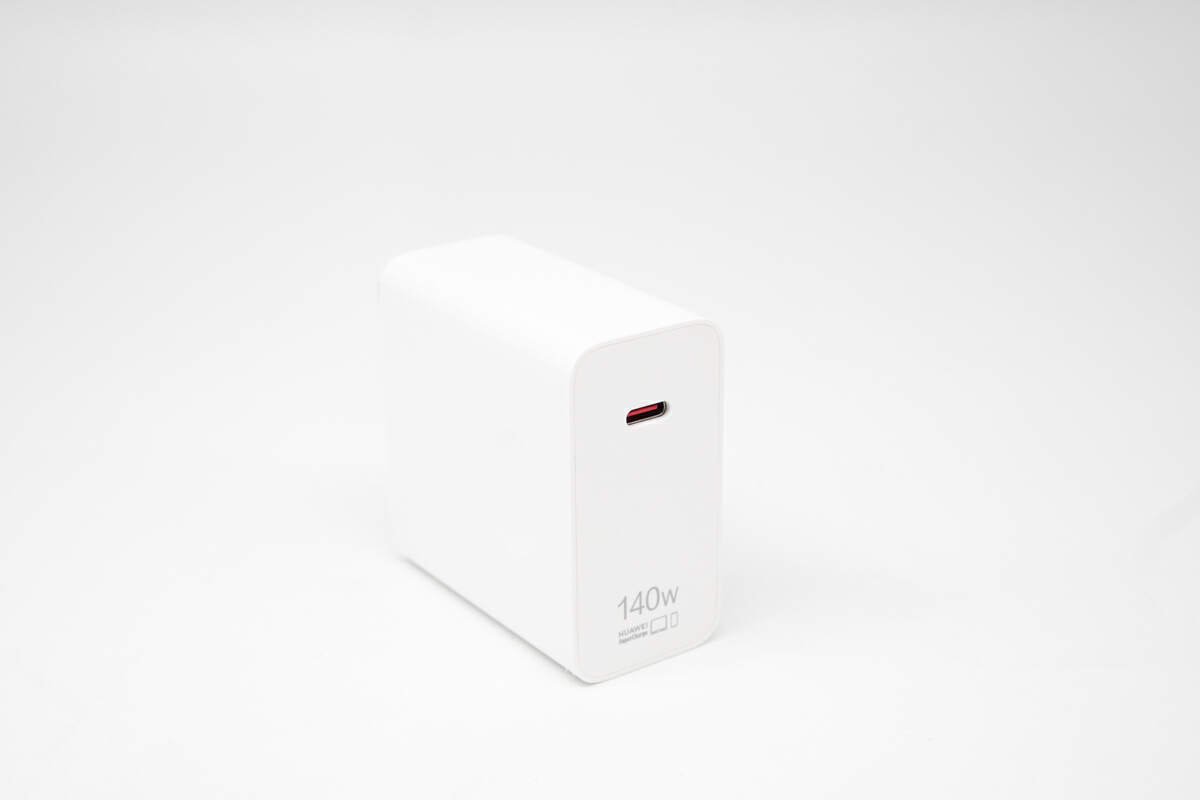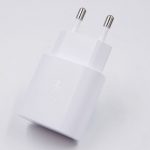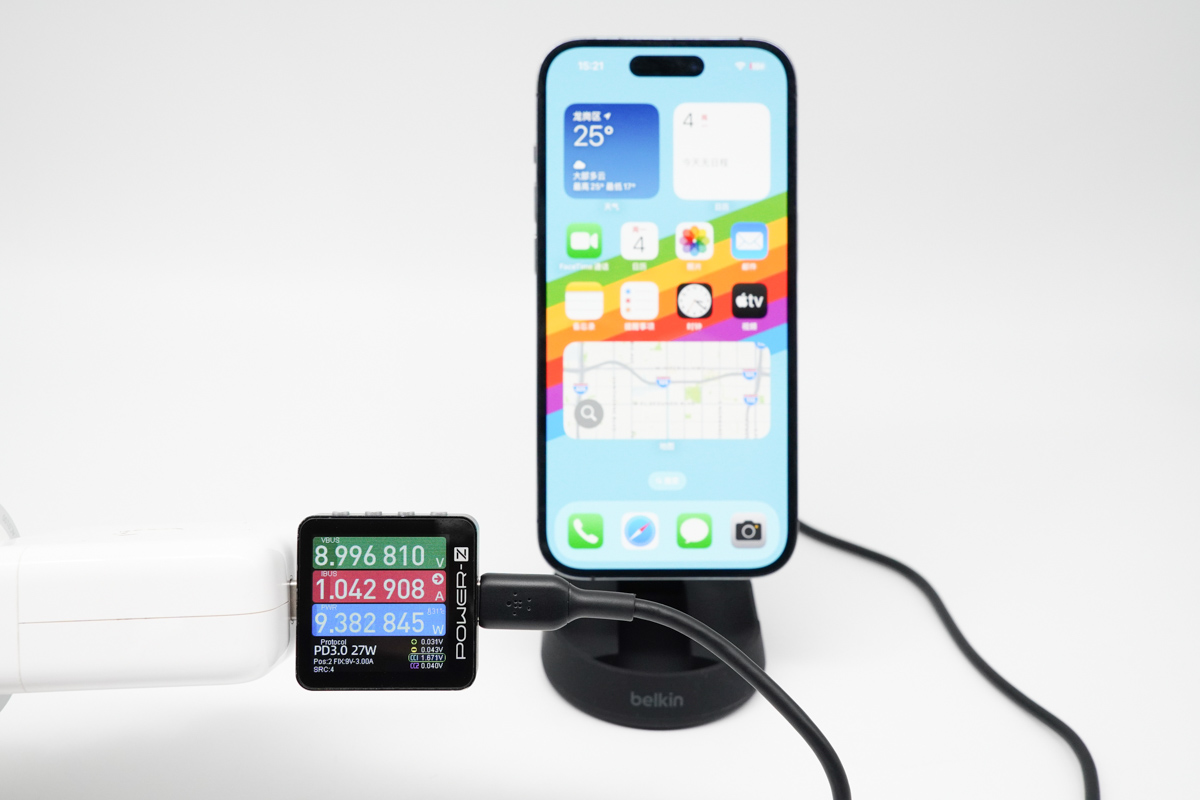Introduction
Tesla is a well-known electric car company that launched a wireless charger with its cable in 2021. Recently, Tesla launched a wireless portable charger with a sense of design.
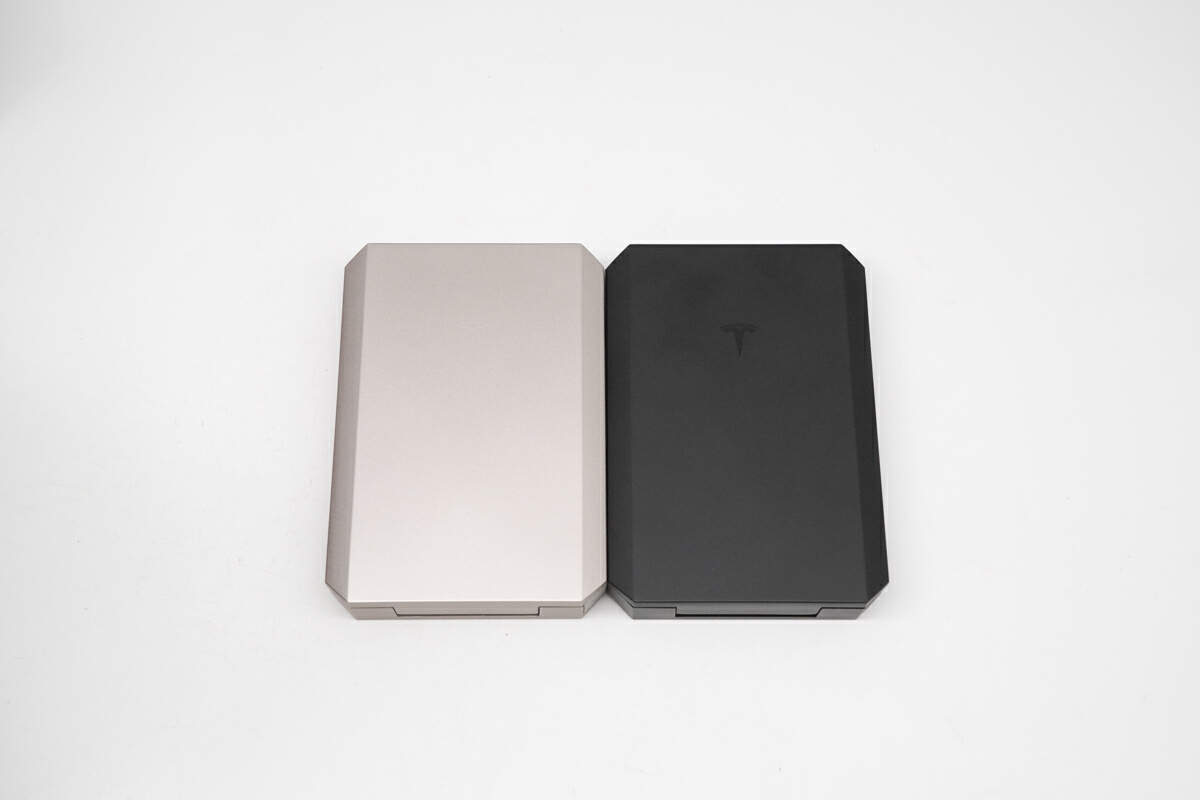
The wireless portable charger has a USB-C cable and a USB-C port and features a flip-top design that allows it to wirelessly charge two devices simultaneously. Next, let's do some tests to see how its charging performance is.
Product Appearance
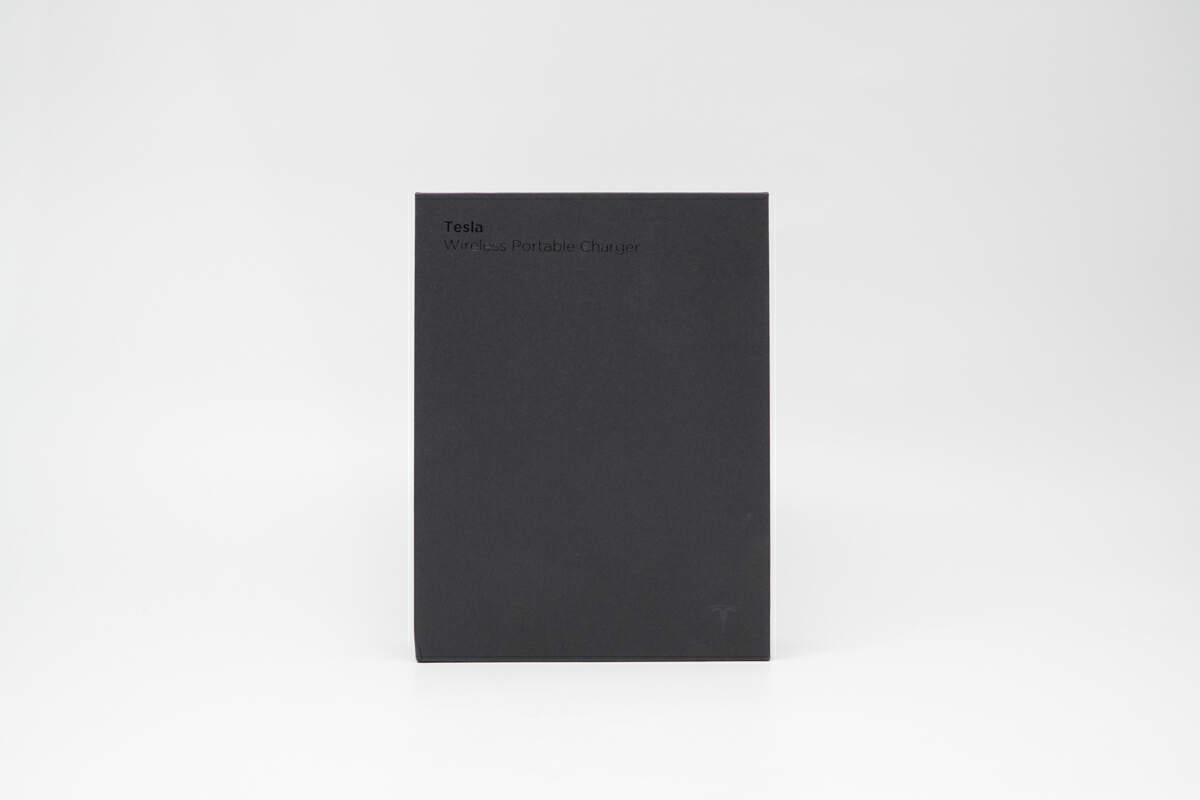
"Tesla Wireless Portable Charger" is printed on the top of the black packaging box.
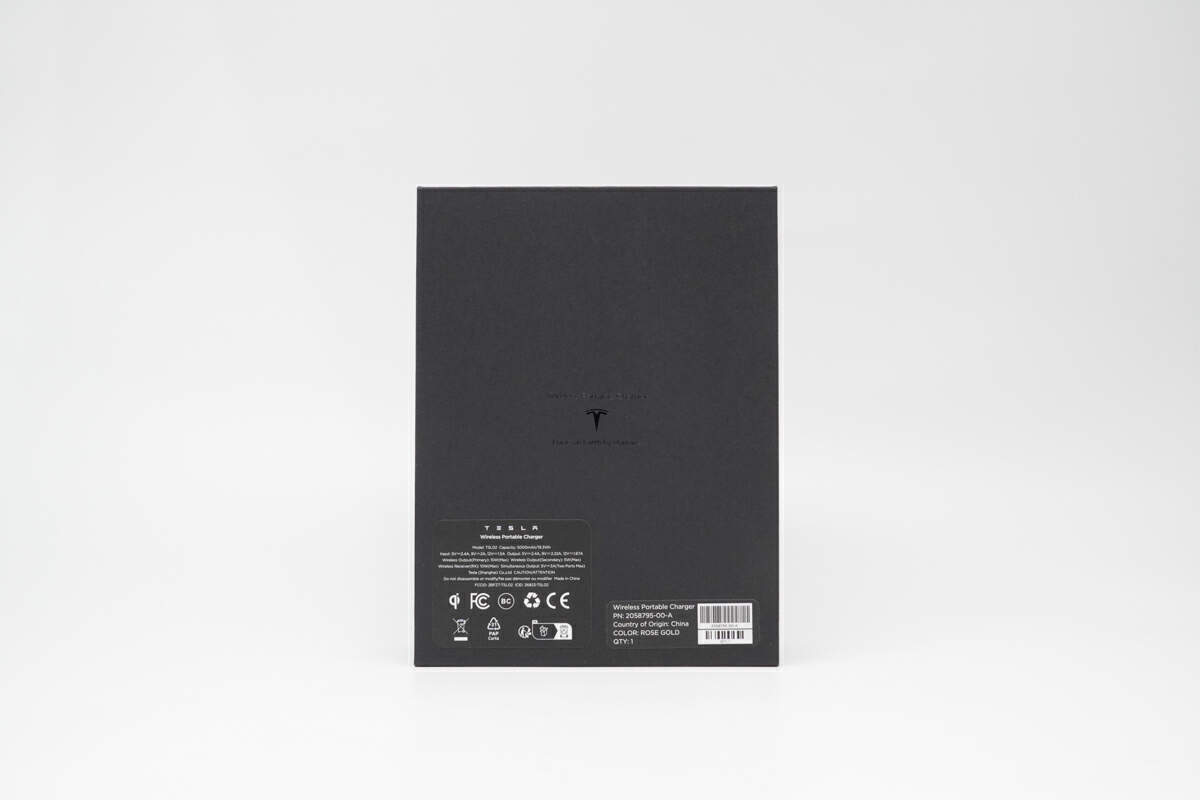
The specs info is printed on the back of the box, we will talk about it later.
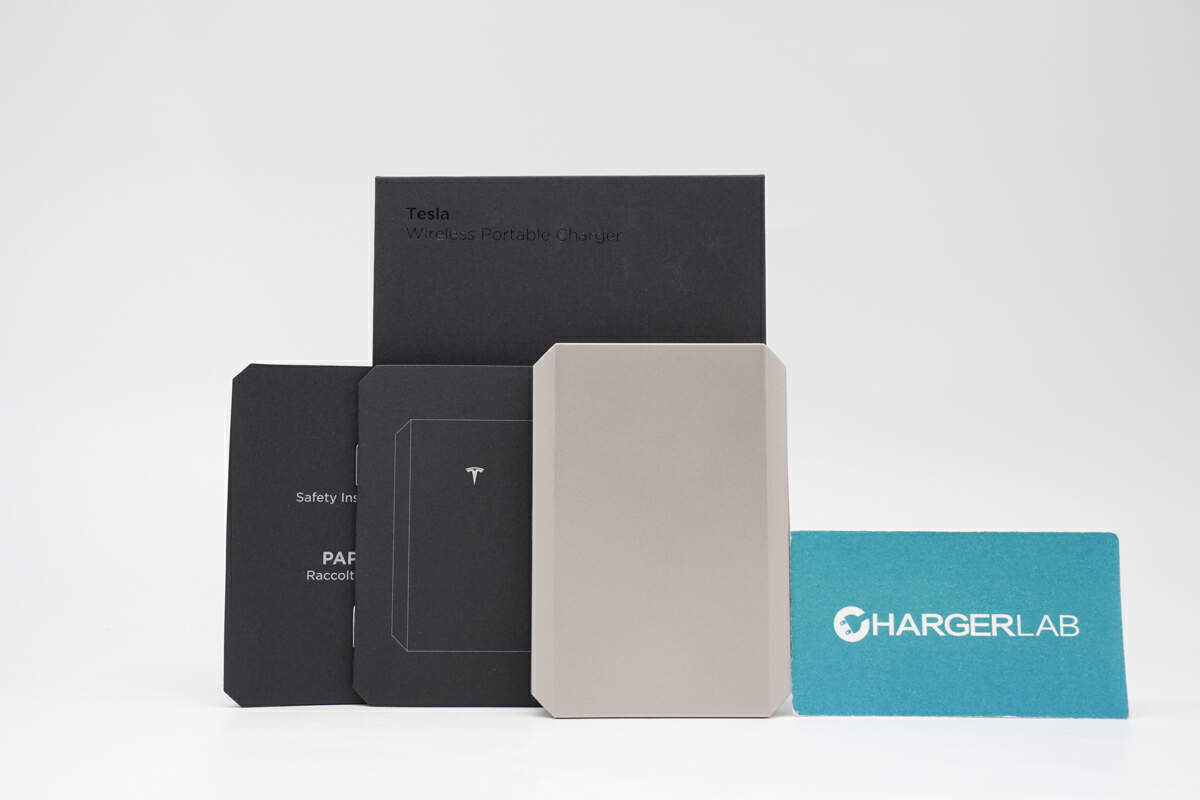
The box contains the charger and some documents.
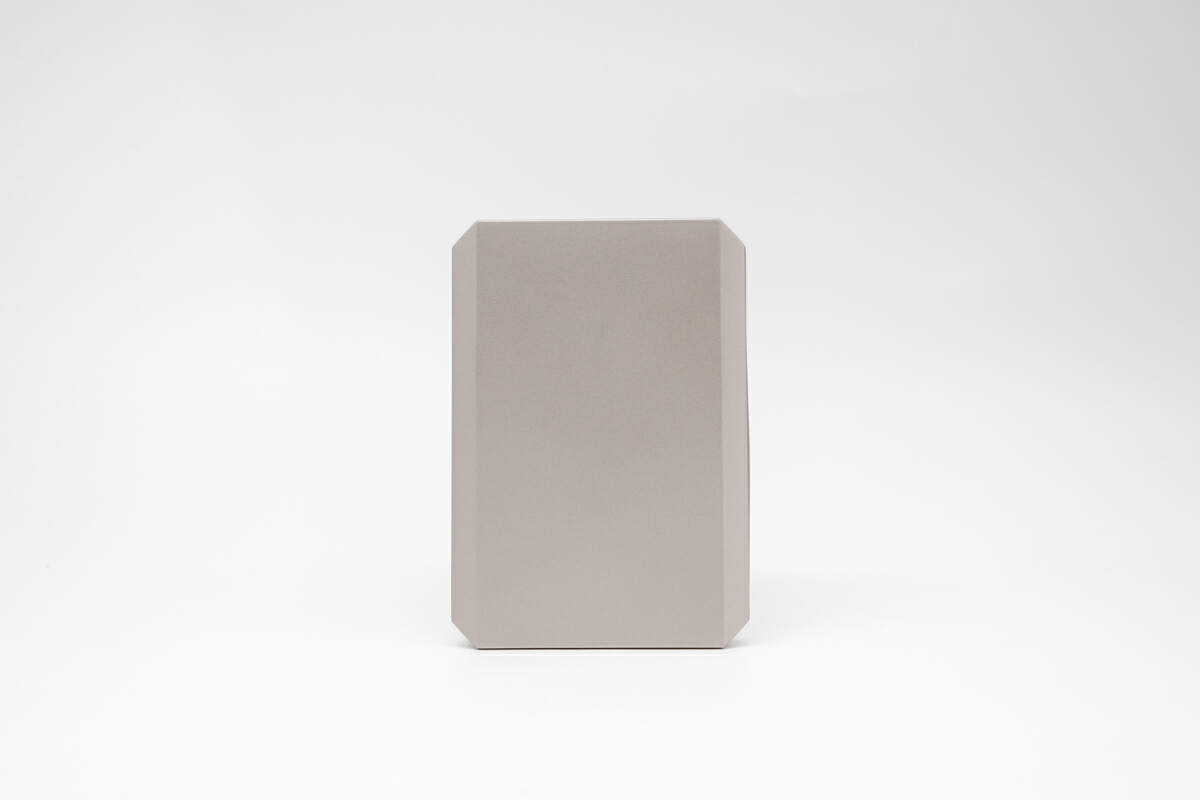
The shell is made of plastic and covered with metallic paint, with sharp edges and corners. The front, which is the wireless charging panel, is engraved with the Tesla logo.
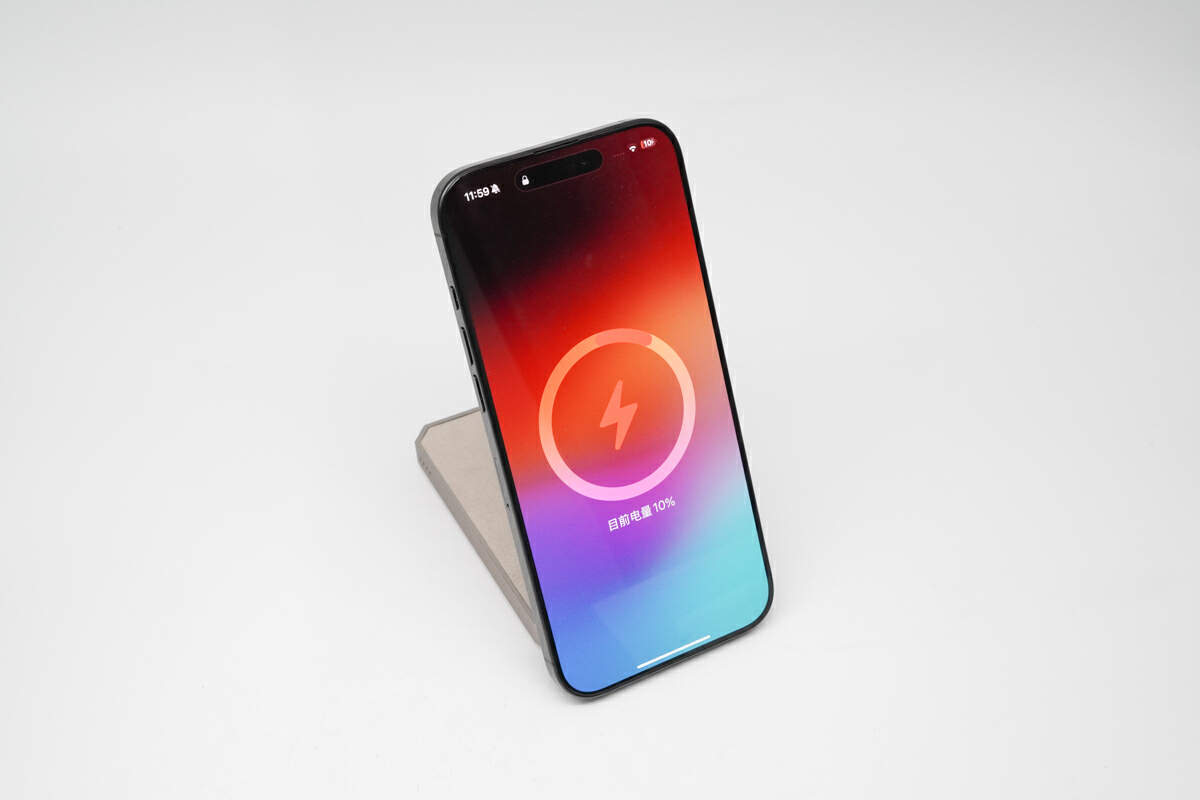
When the phone is charged with this wireless charging panel, it can be placed upright.
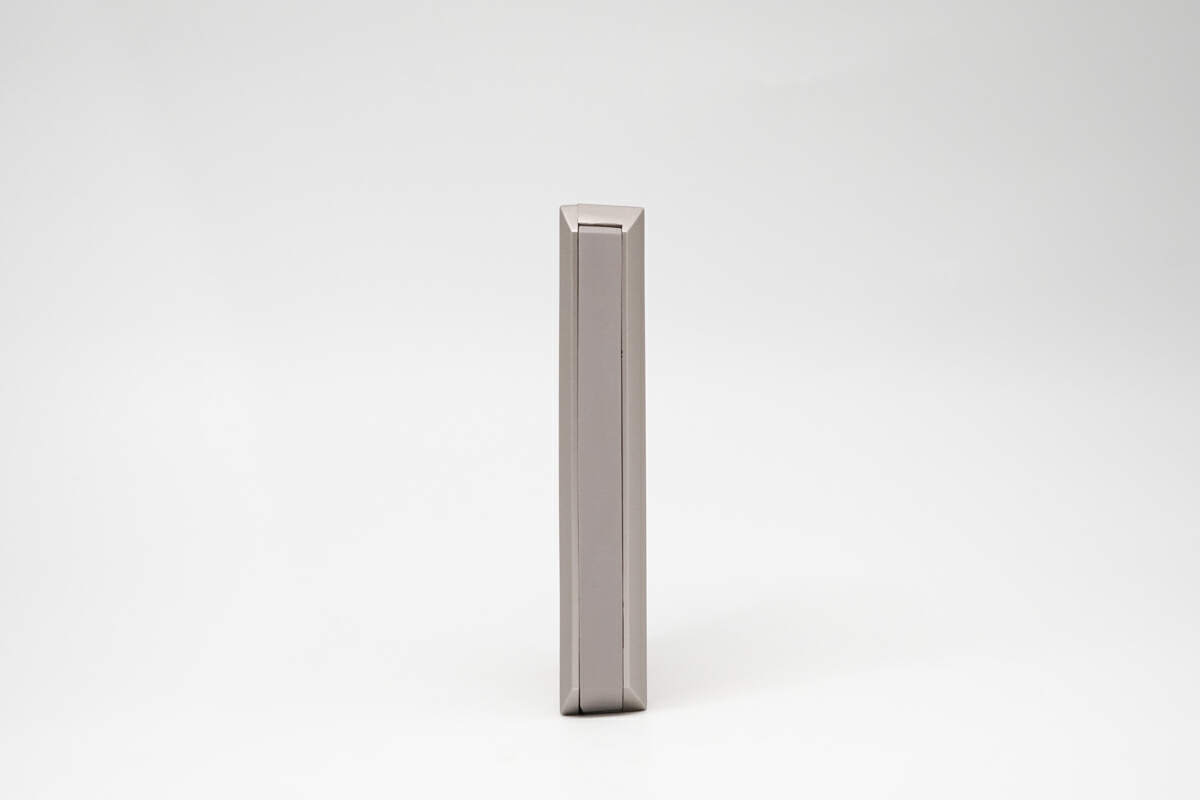
There is an integrated USB-C cable on the side.
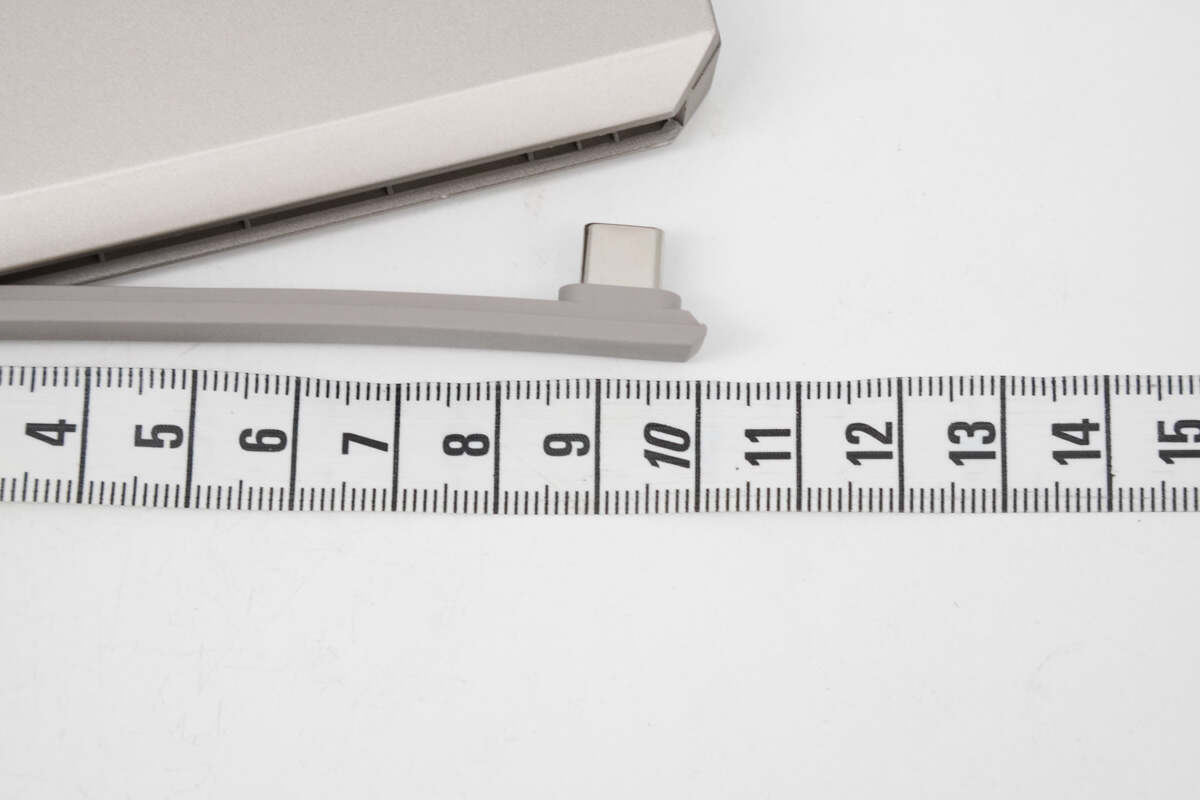
The length of the integrated cable is about 10 cm (3.94 inches).
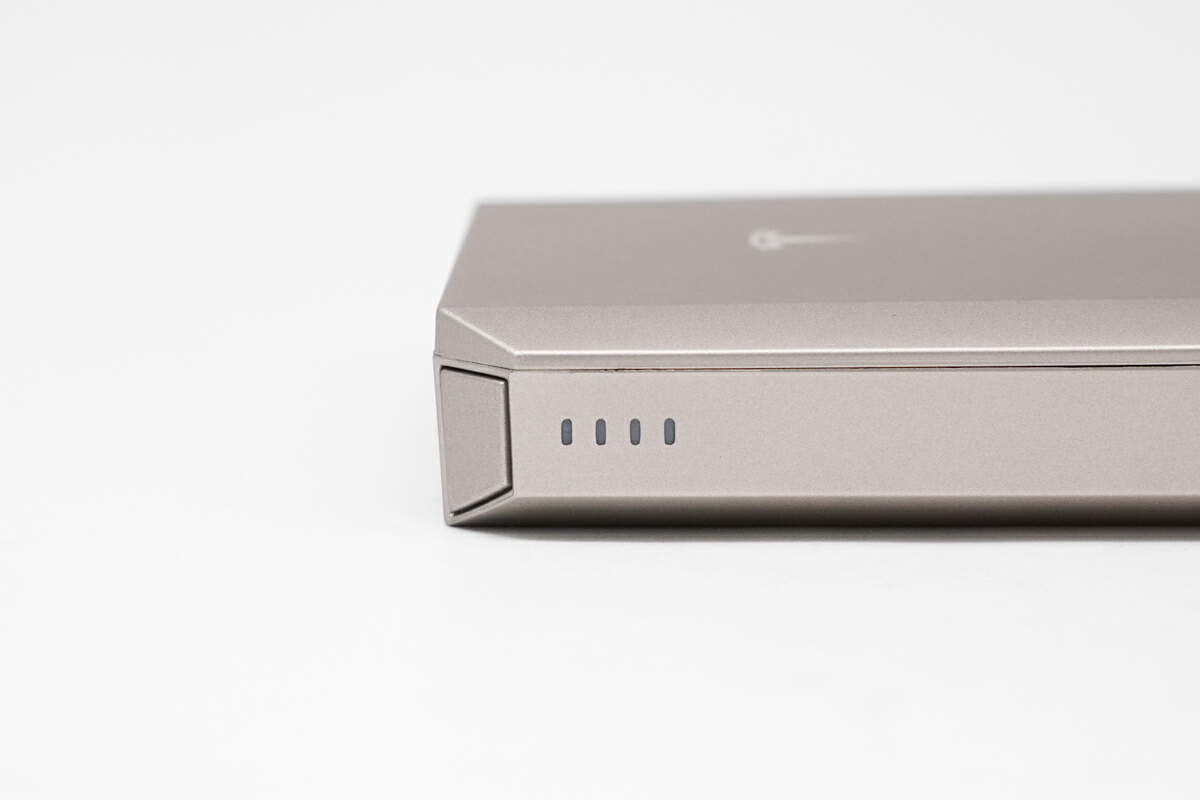
There are four LED indicators on the other side.
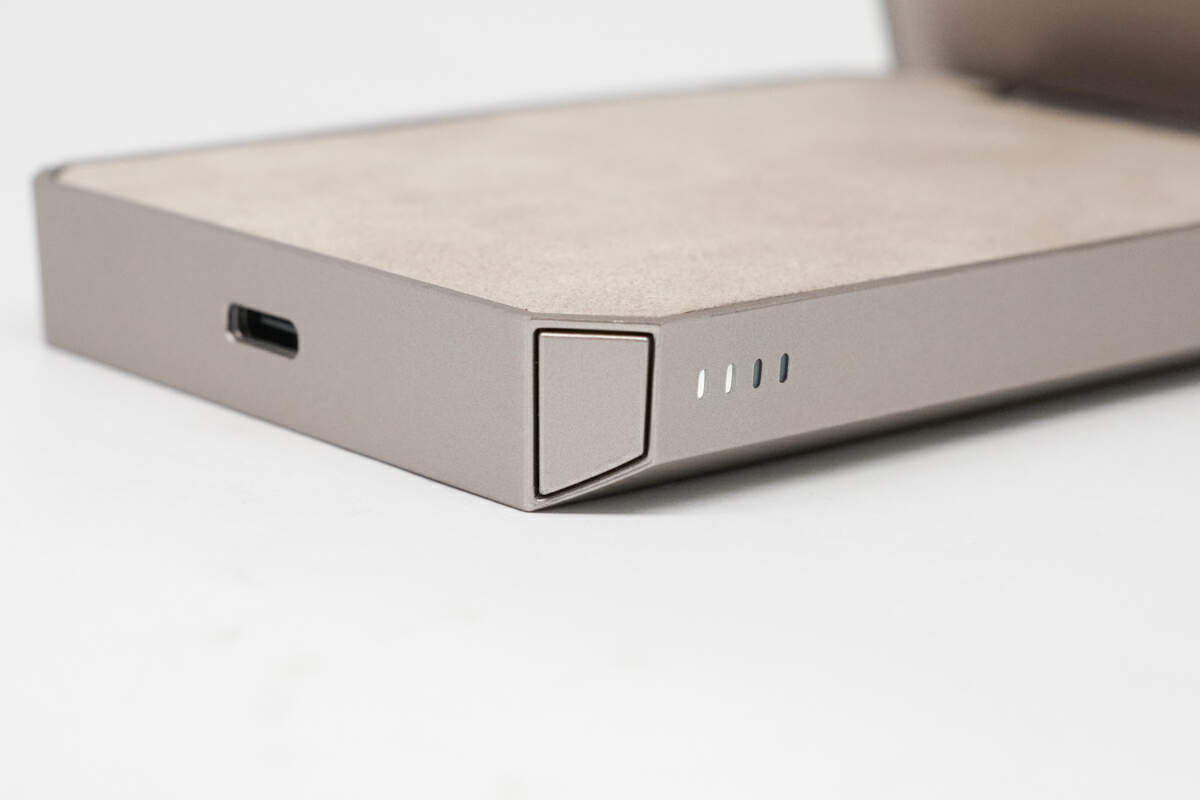
Above the power indicators is the power button.
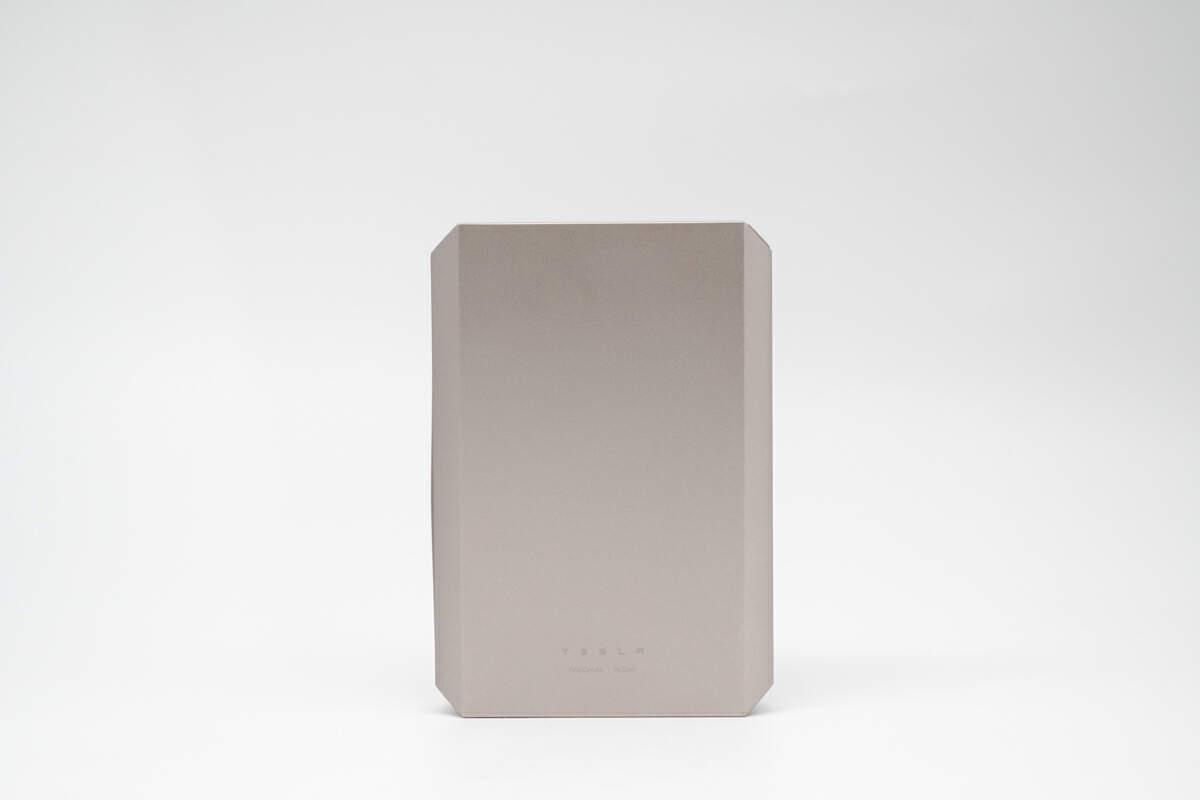
The back design is extremely simple.
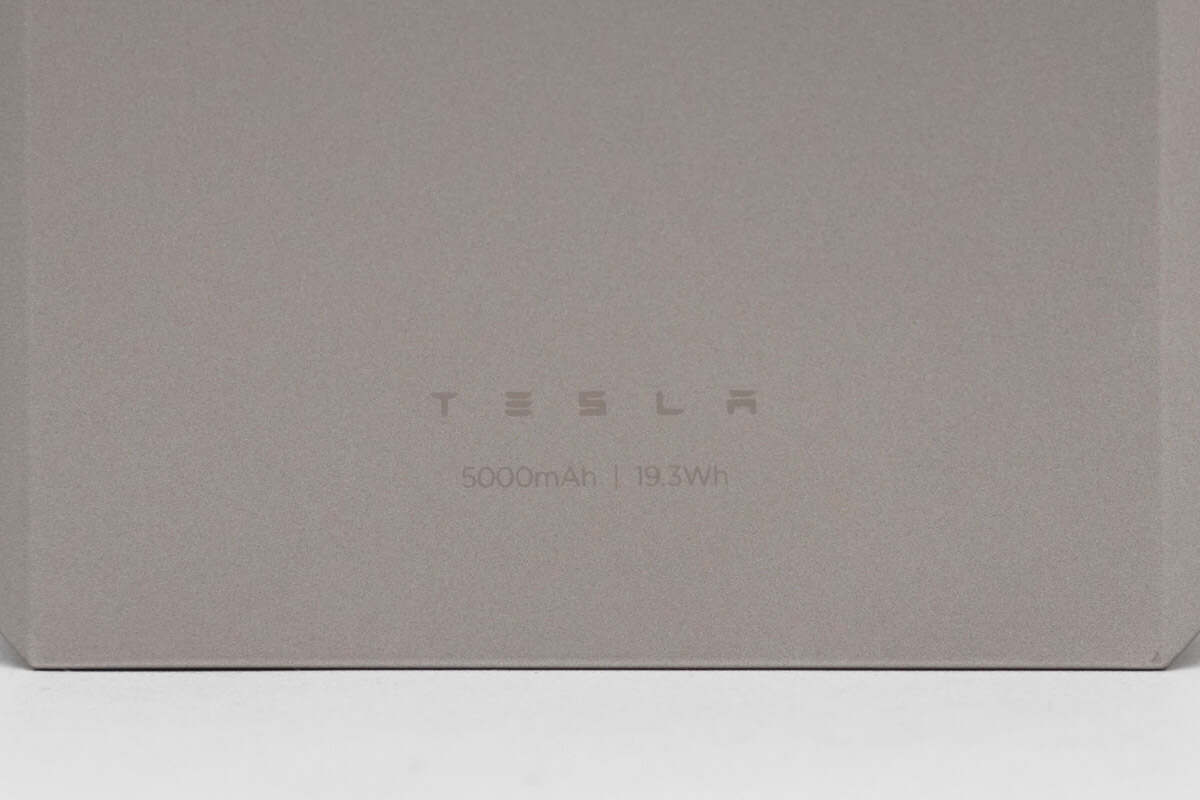
The capacity is 5000mAh, and the energy is 19.3Wh.
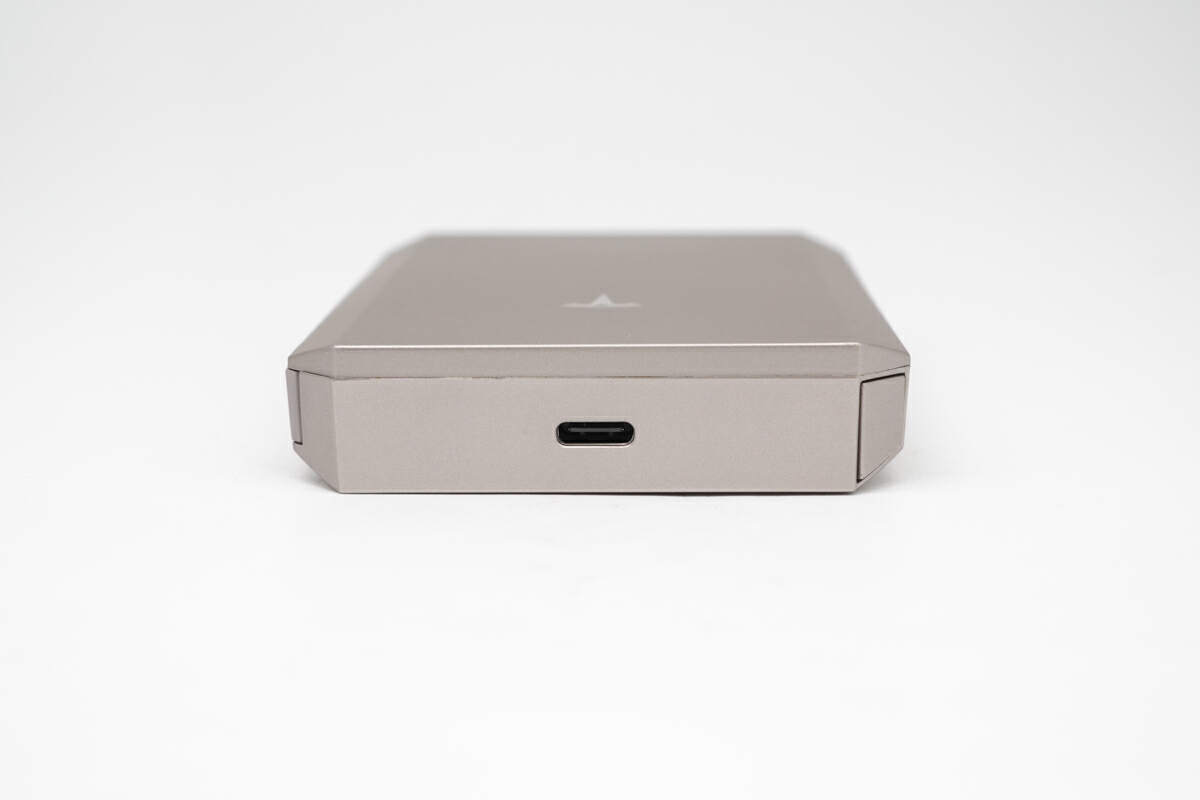
There is a USB-C port on the top, and the plastic sheet is black.
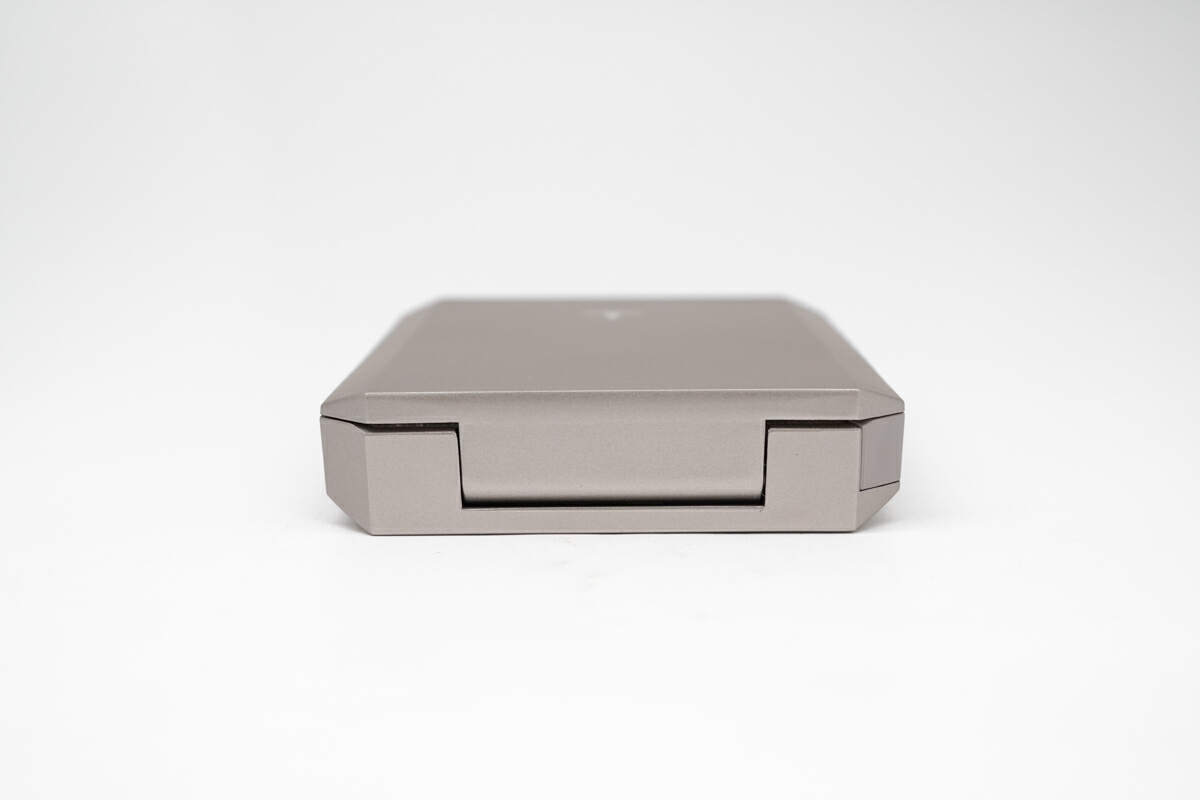
The hinge is at the bottom.
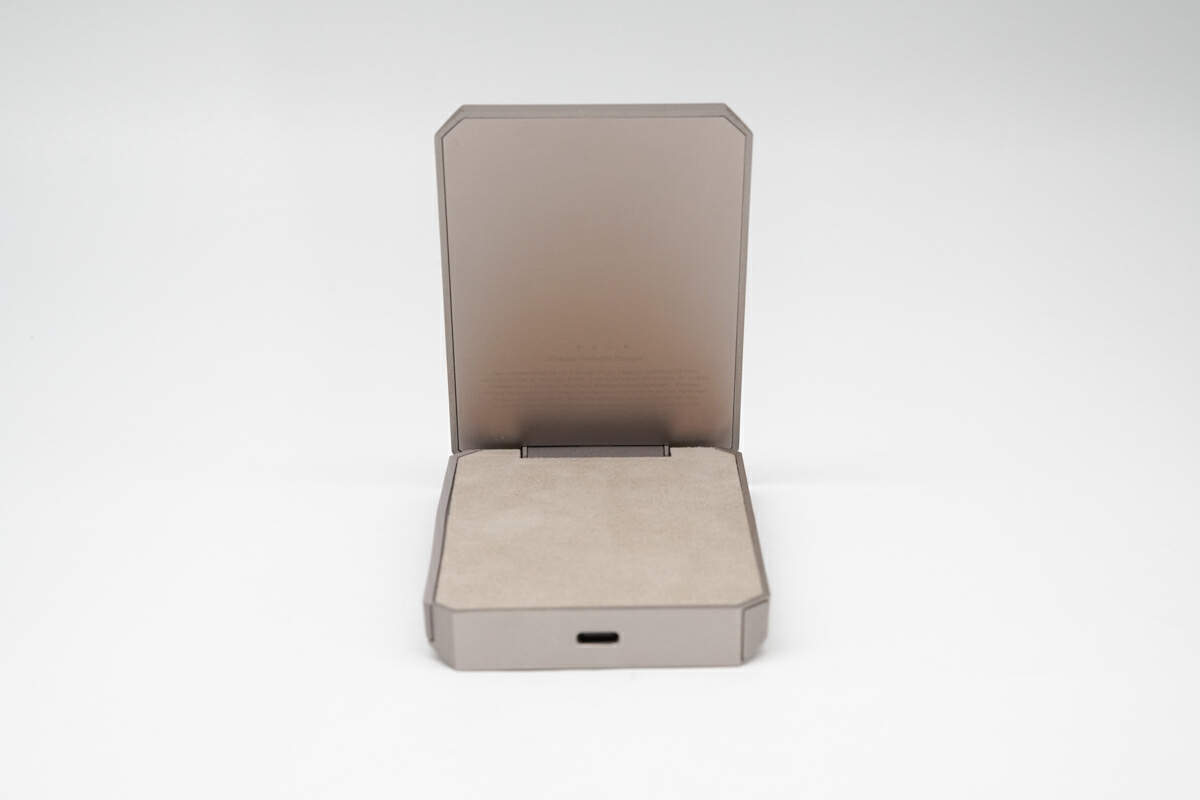
Open the first wireless charging panel, and you will see a wireless charging panel on the inside, which is covered with Alcantara suede to prevent the device from being scratched and enhance friction.
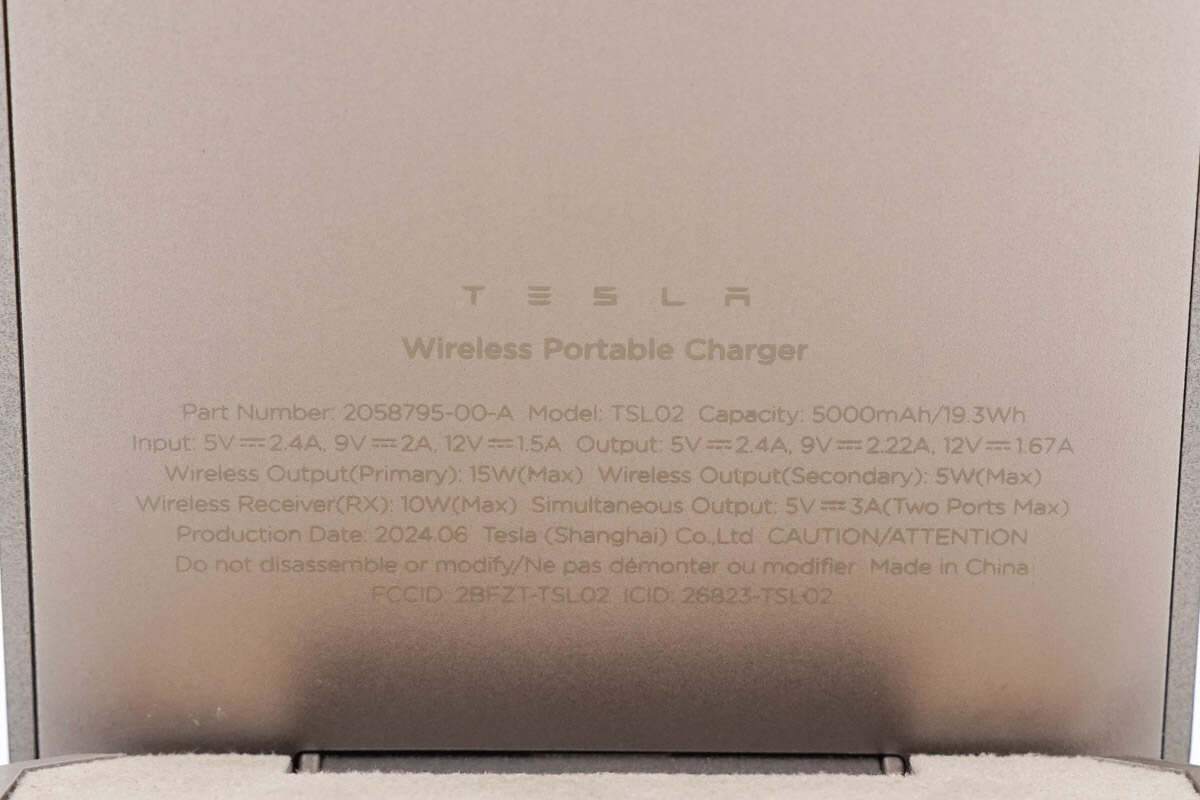
Model is TSL02. The capacity is 5000mAh, and the energy is 19.3Wh. It can support input of 5V2.4A, 9V2A, and 12V1.5A. The maximum output is 20W. The maximum wireless output (primary) is 15W. The maximum wireless output (secondary) is 5W. The maximum power of the wireless receiver is 10W.
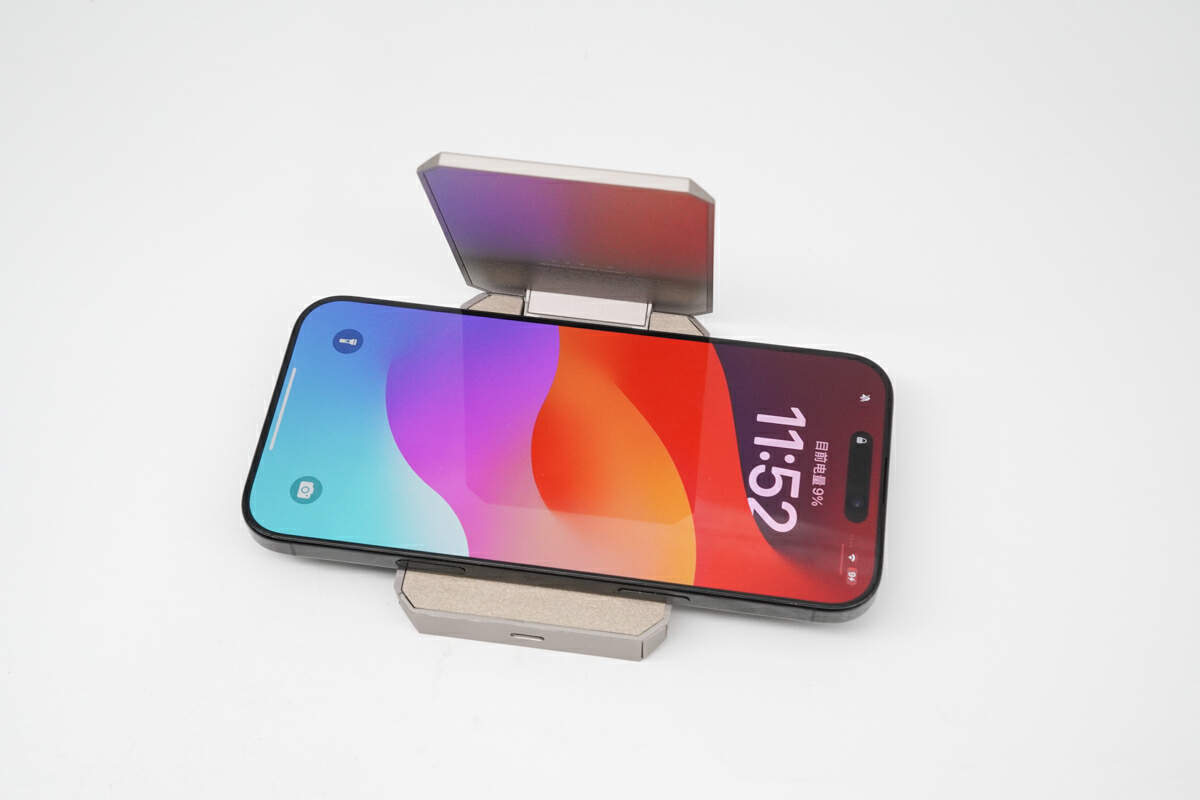
The secondary wireless charging panel can also charge the phone.
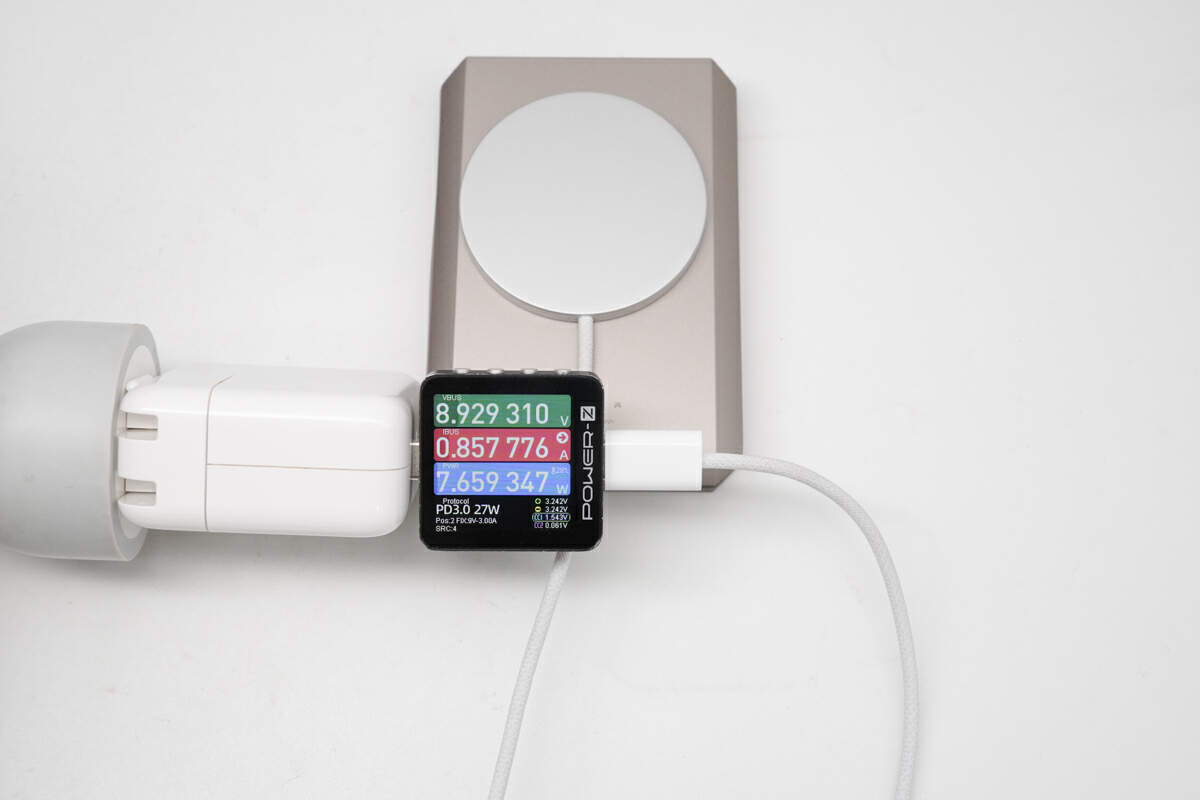
Using an Apple MagSafe charger to charge it, the input power is 7.66W.
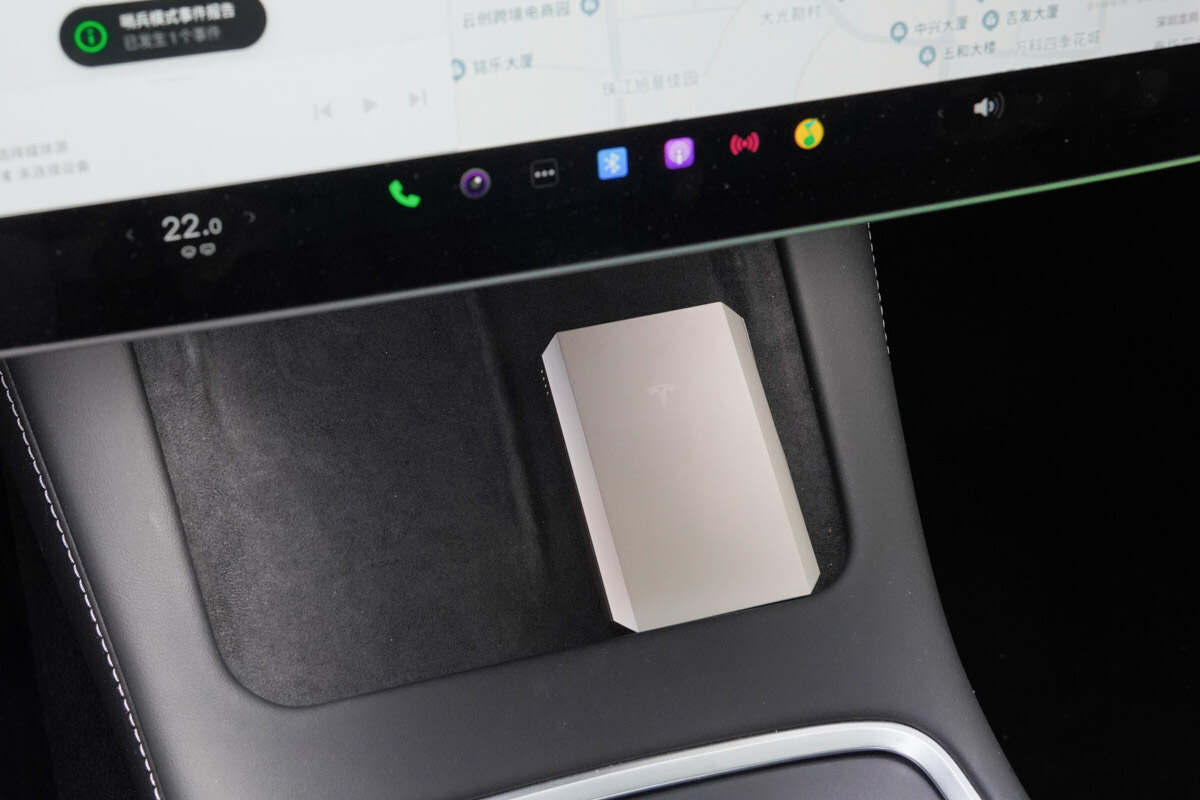
The wireless charging station in the center console of Tesla electric vehicles can also charge it.
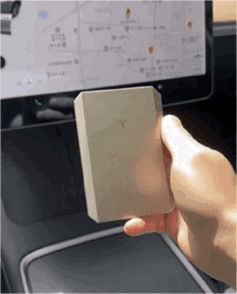
Put it into the wireless charging station, and you can see the LED indicator flashing, indicating that it is charging.
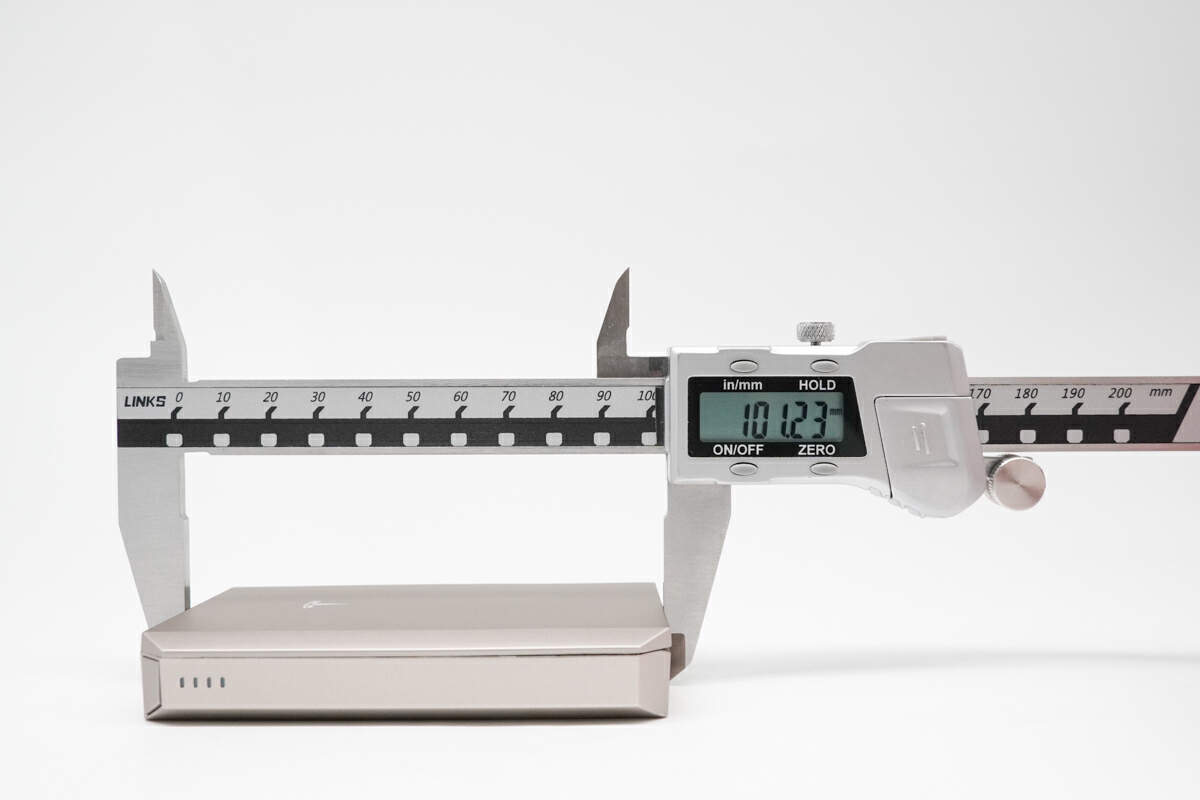
The length is about 101.23 mm (3.94 inches).
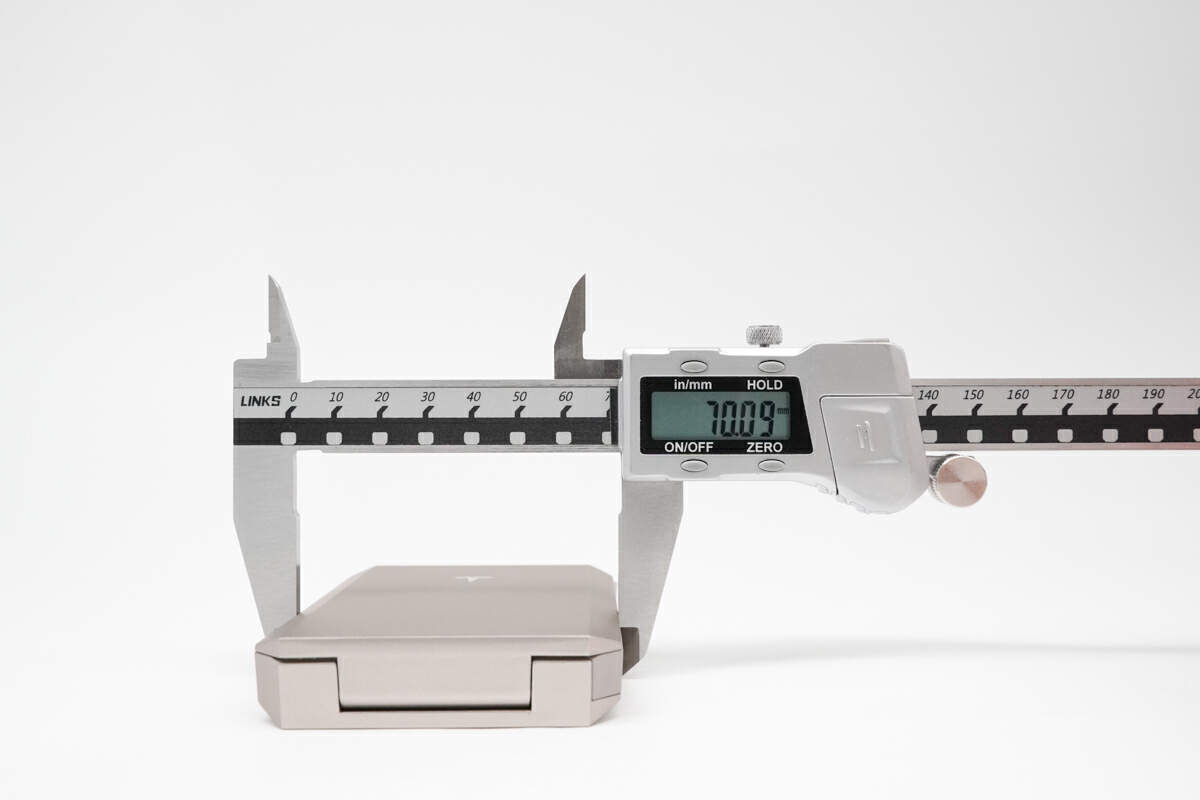
The width is about 70.09 mm (2.76 inches).
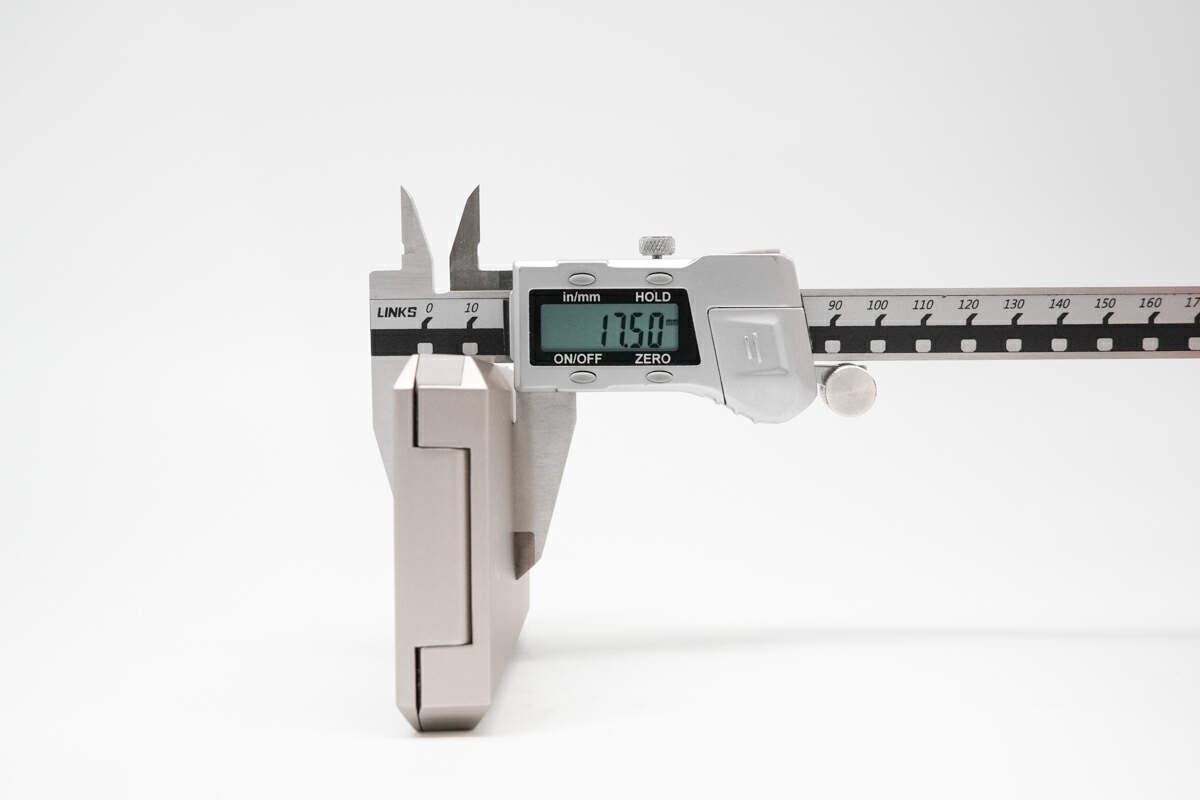
The thickness is about 17.5 mm (0.69 inches).
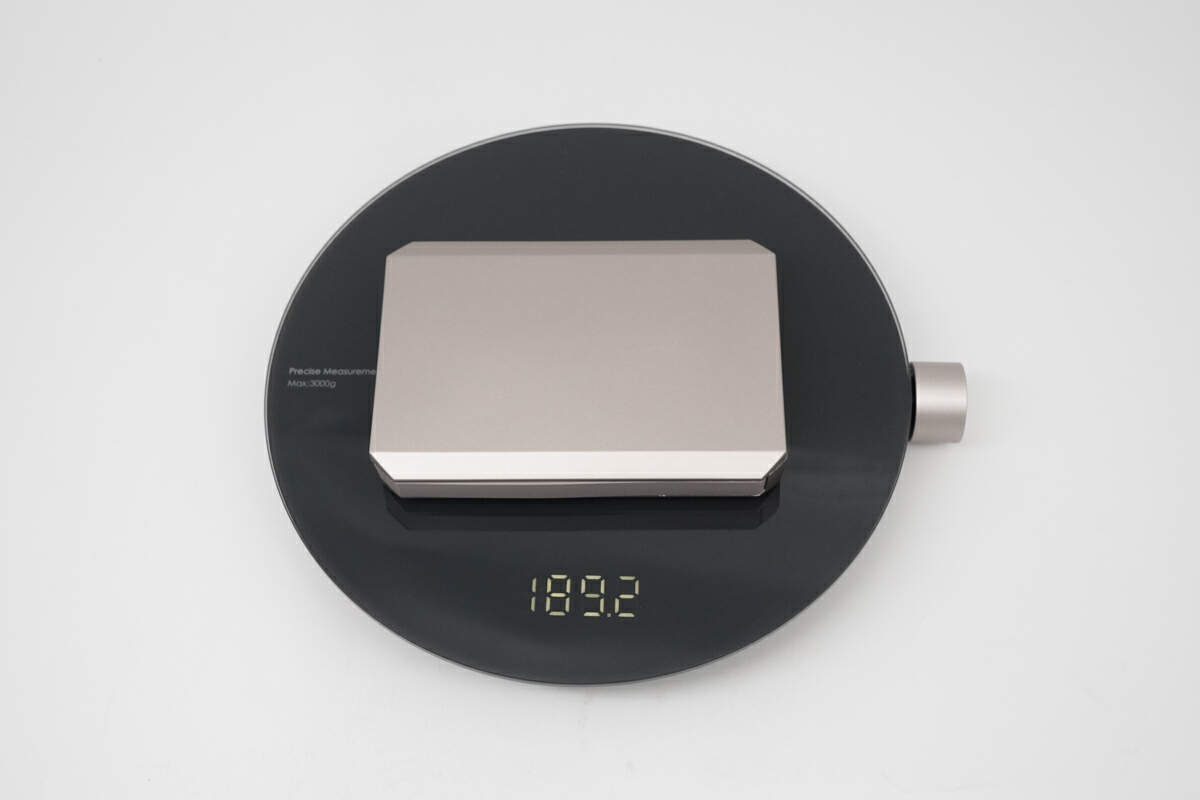
And the weight is about 189.2 g (6.67 oz).
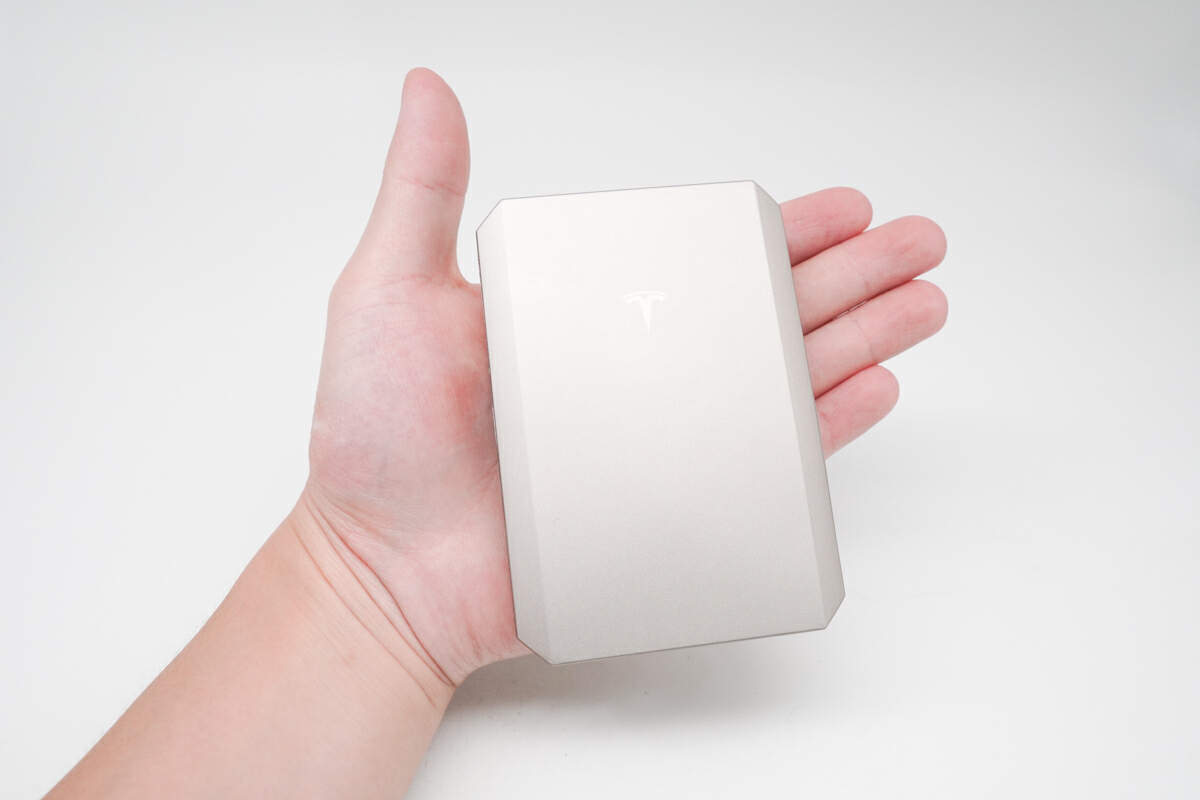
That's how big it is in the hand.
Usage Experience
Let’s experience its usage scenarios in daily life.
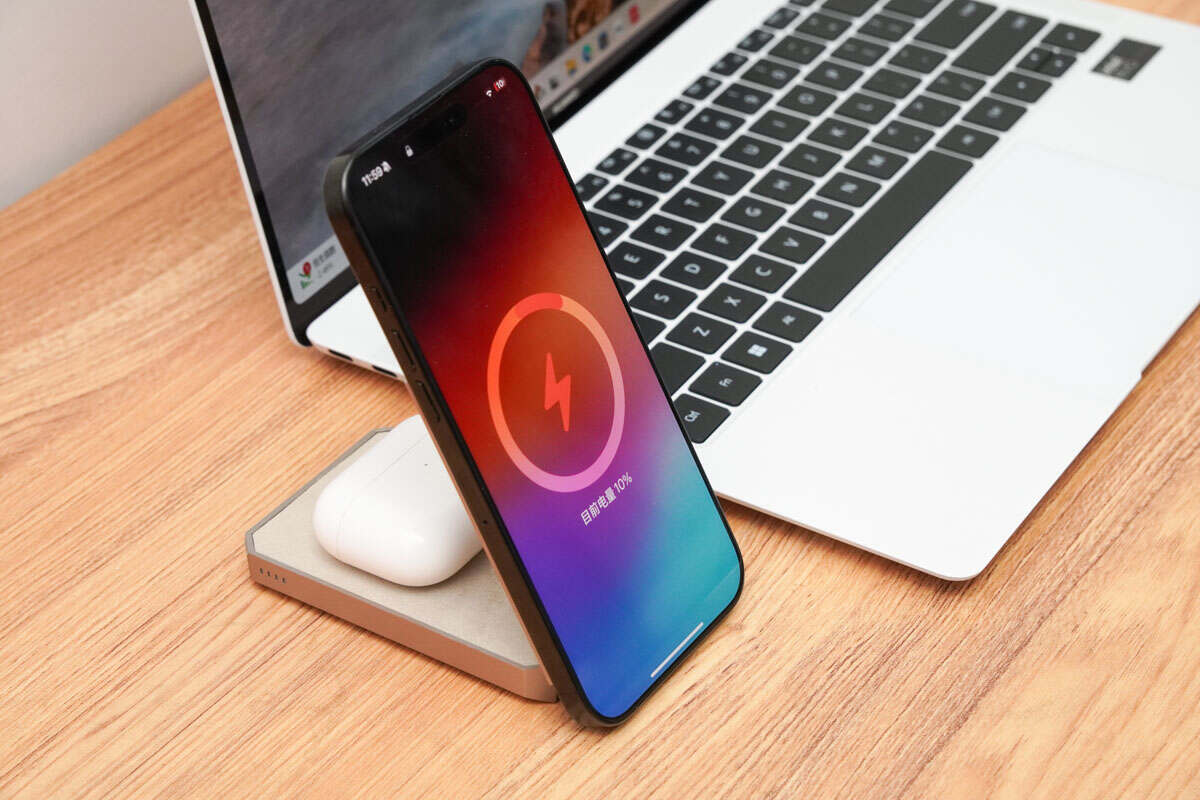
The primary wireless charging panel can charge a phone while adsorbing it and can be used as a phone stand. At the same time, the secondary wireless charging panel can charge another device.
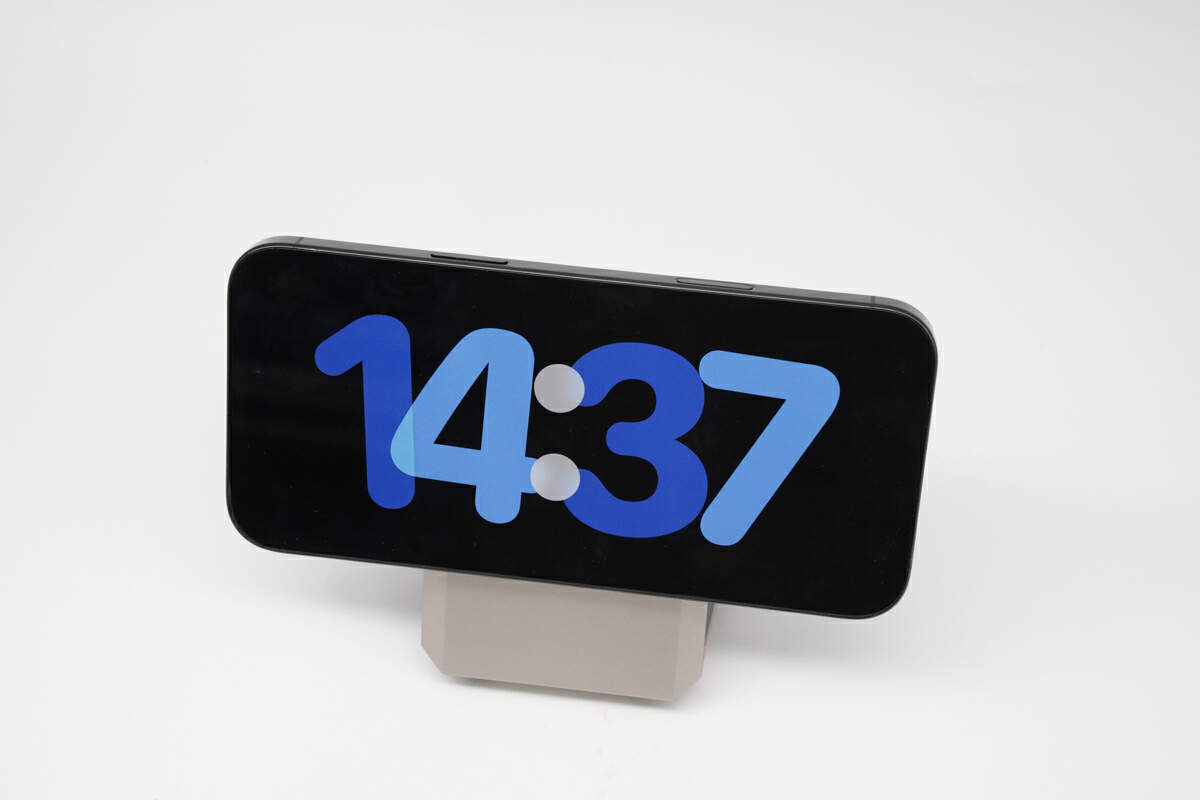
For iPhone users, it supports StandBy mode, letting you customize your iPhone’s display when docked.
Protocol Test
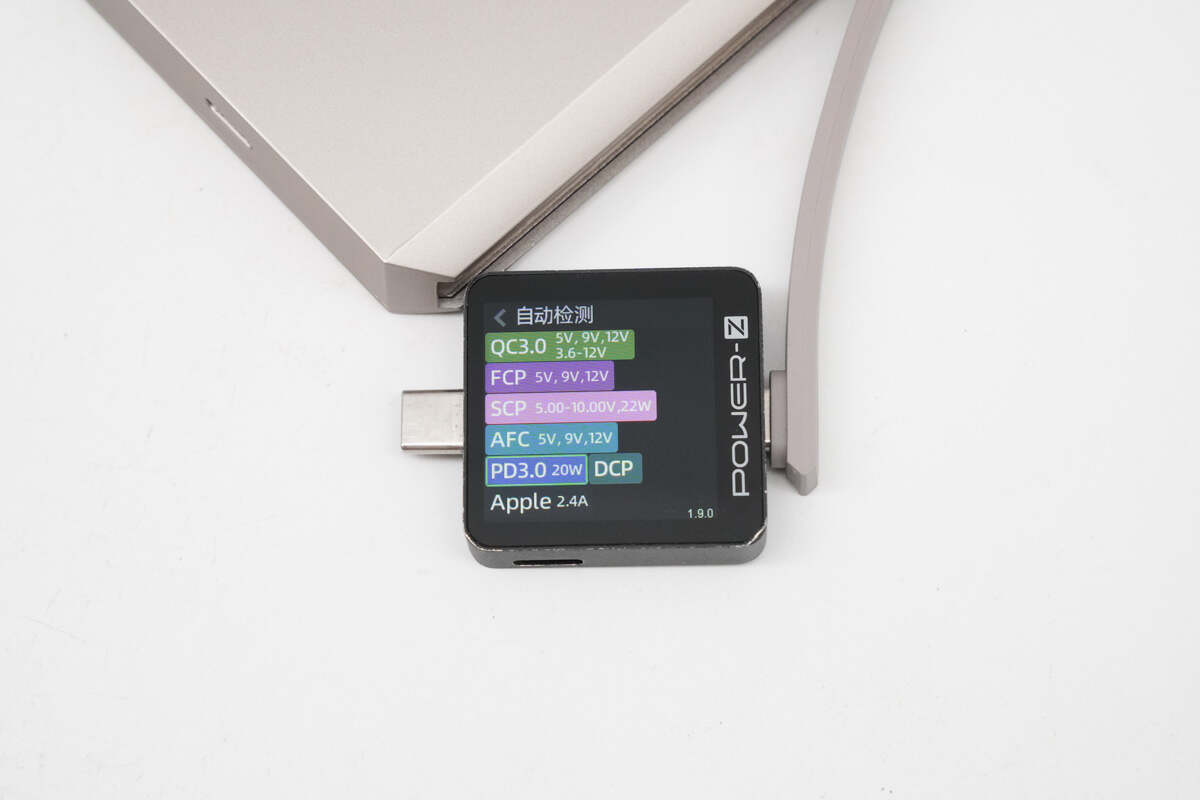
ChargerLAB POWER-Z KM003C shows the USB-C cable can support QC3.0, FCP, SCP, AFC, PD3.0, DCP, and Apple 2.4A charging protocols.
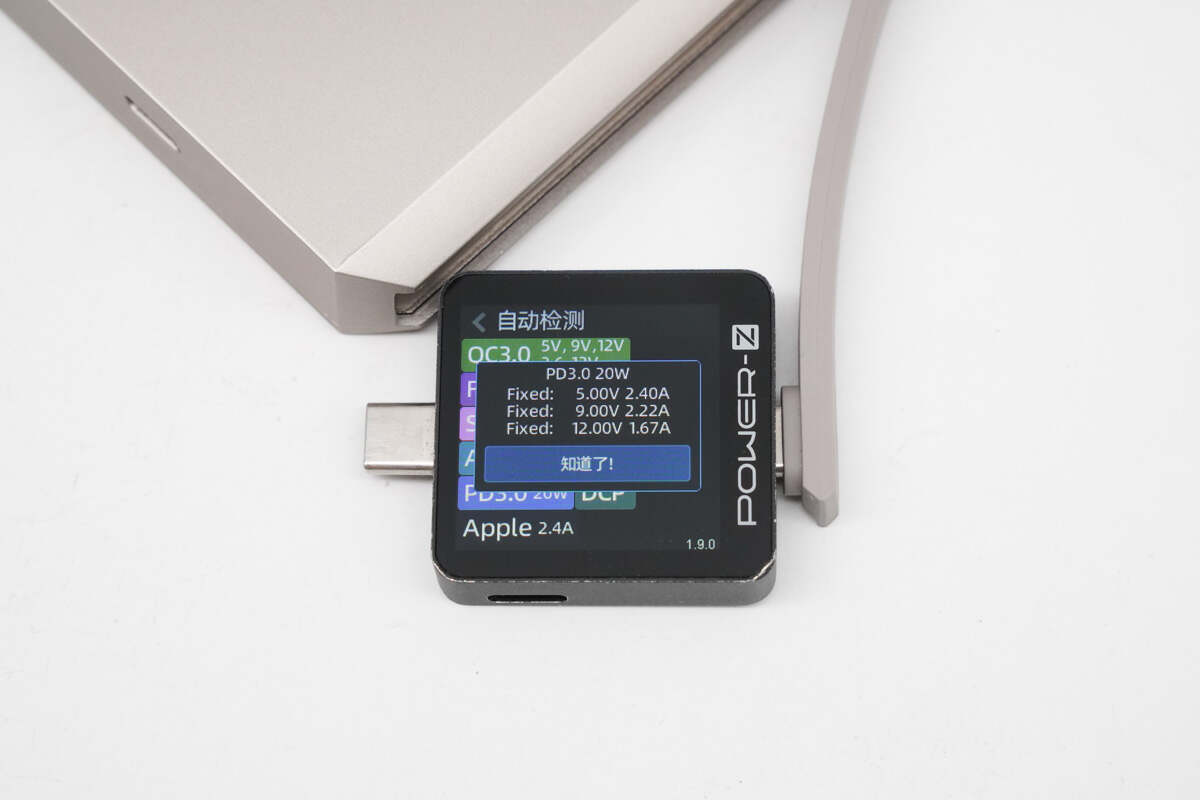
And it has three fixed PDOs of 5V/2.4A, 9V/2.22A, and 12V/1.67A.
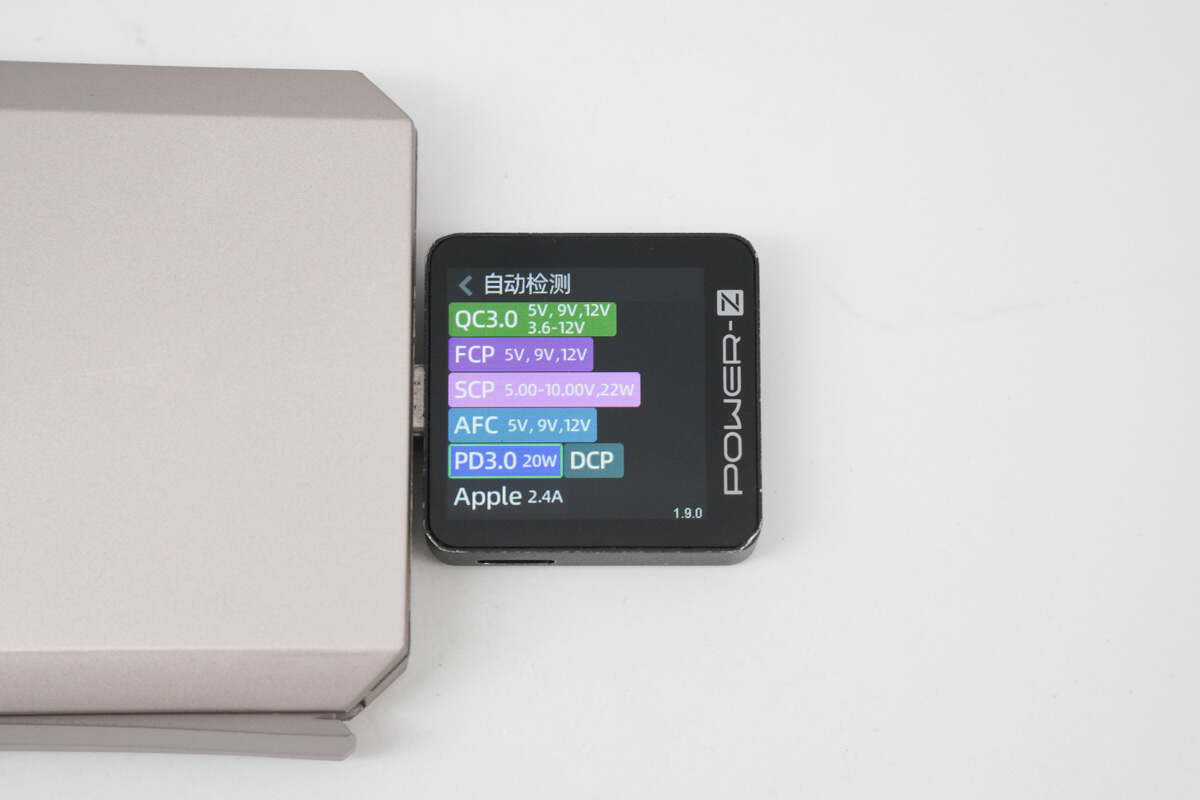
ChargerLAB POWER-Z KM003C shows the USB-C port can support QC3.0, FCP, SCP, AFC, PD3.0, DCP, and Apple 2.4A charging protocols.
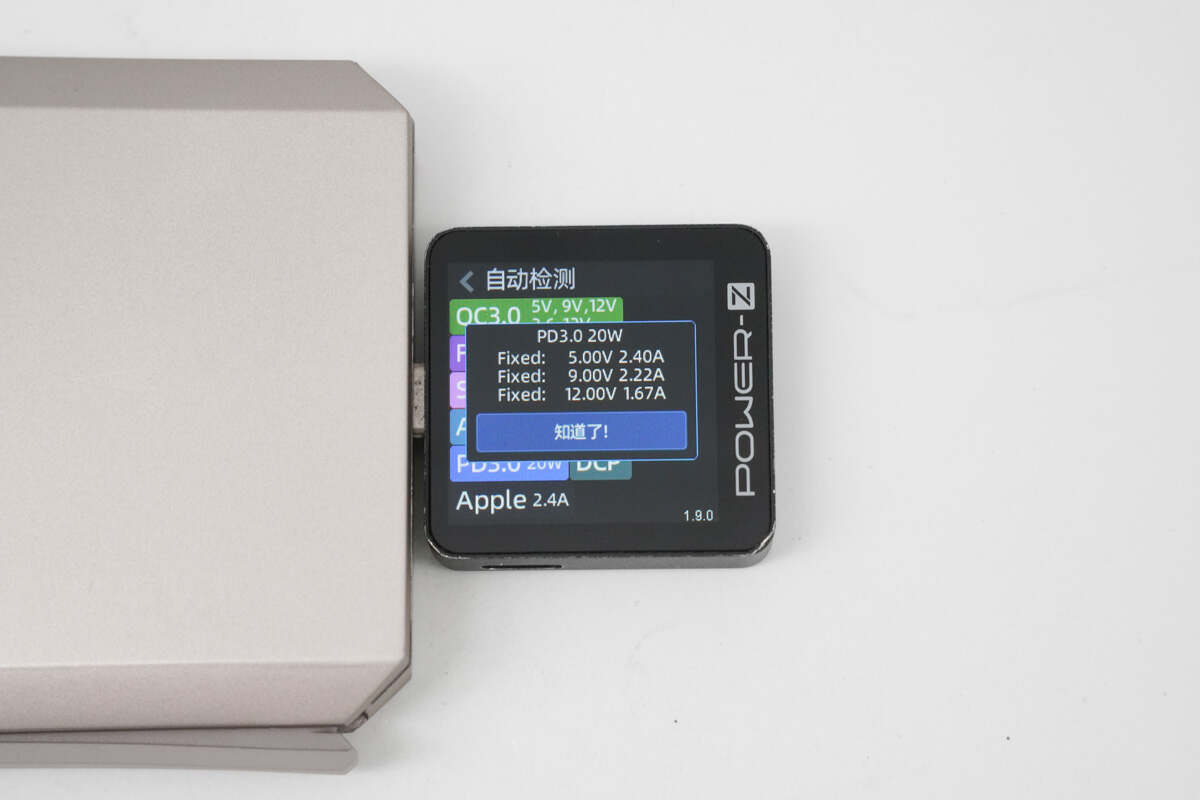
And it has three fixed PDOs of 5V/2.4A, 9V/2.22A, and 12V/1.67A.
Charging Test
Now, let's take a look at its charging test.
Compatibility Test
Integrated Cable
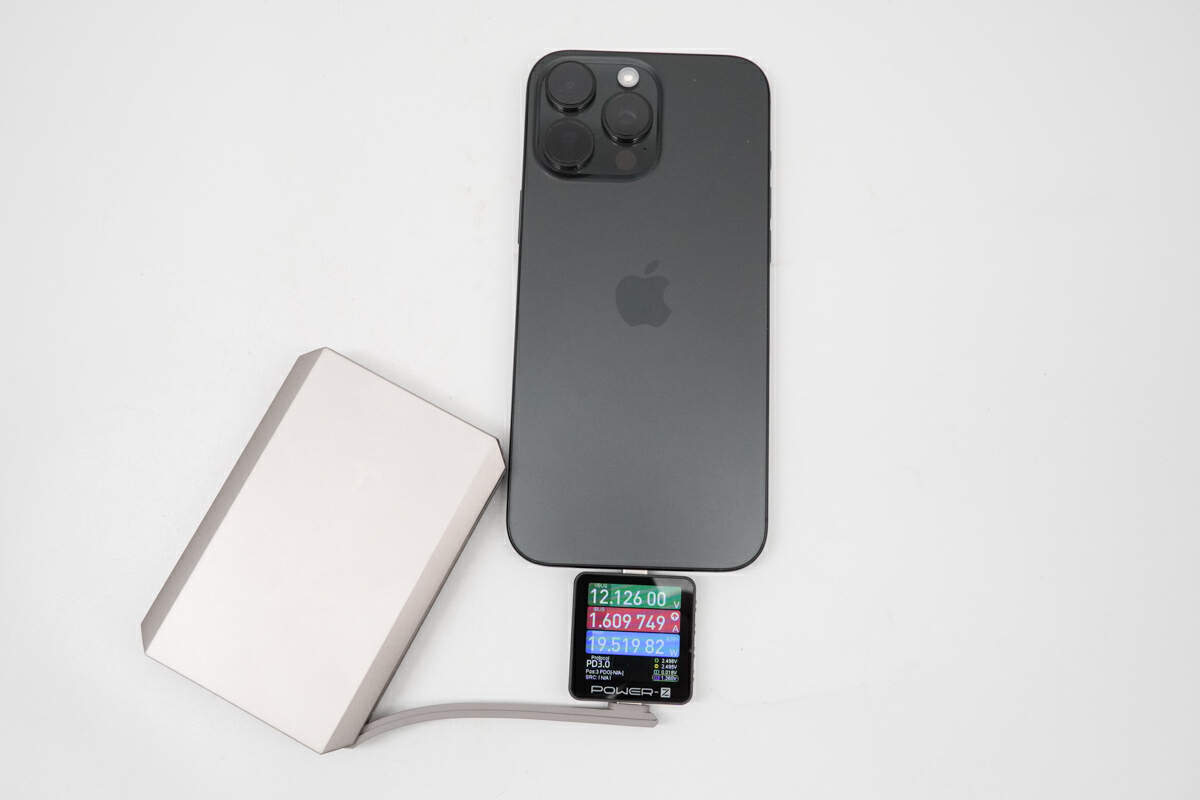
Use the integrated cable to charge the iPhone 16 Pro Max, the power is about 12.13V 1.61A 19.52W.
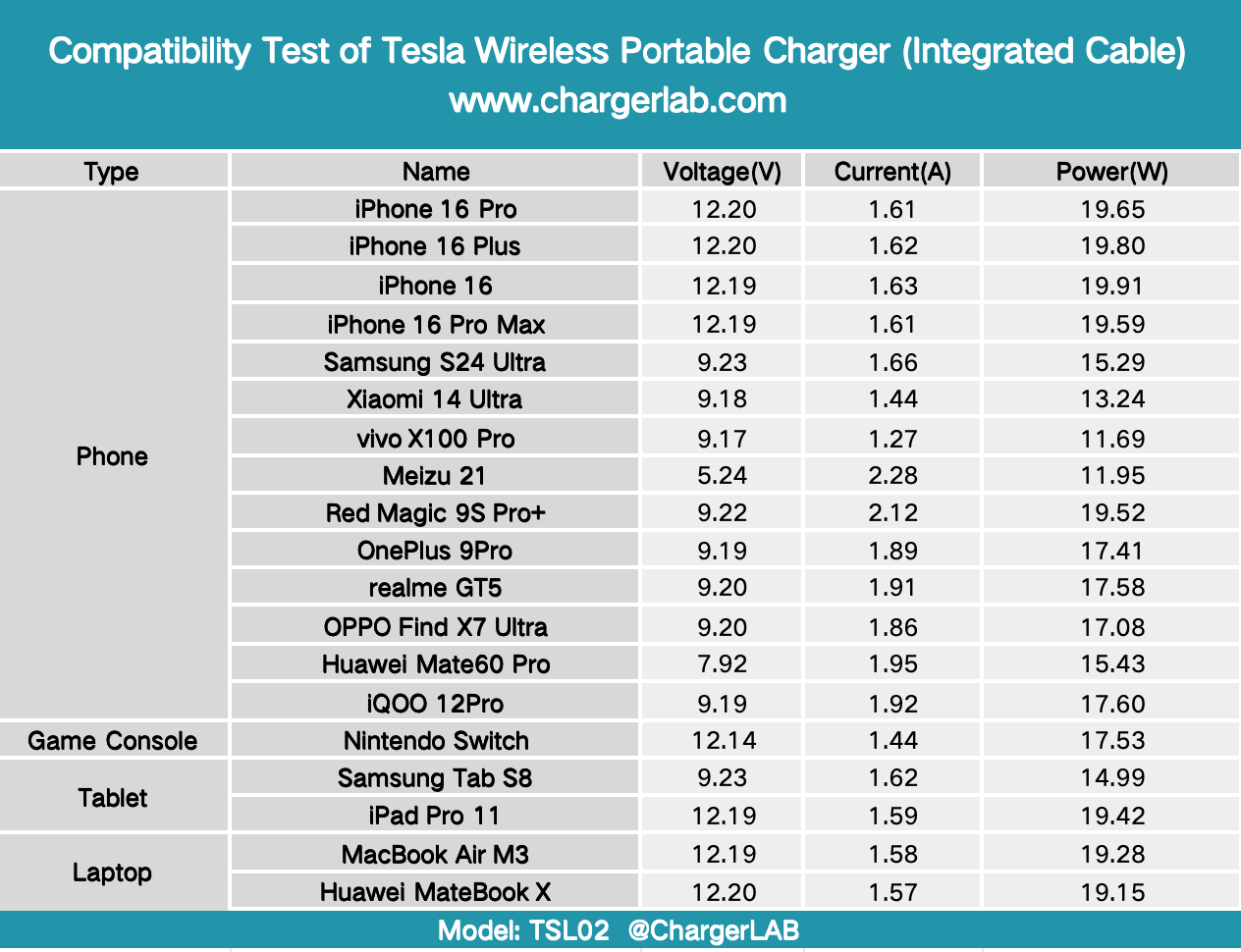
As you can see, there is no compatibility issue. The phones that can support PD protocol can reach about 9V. Most game consoles, tablets, and laptops can reach about 12V.
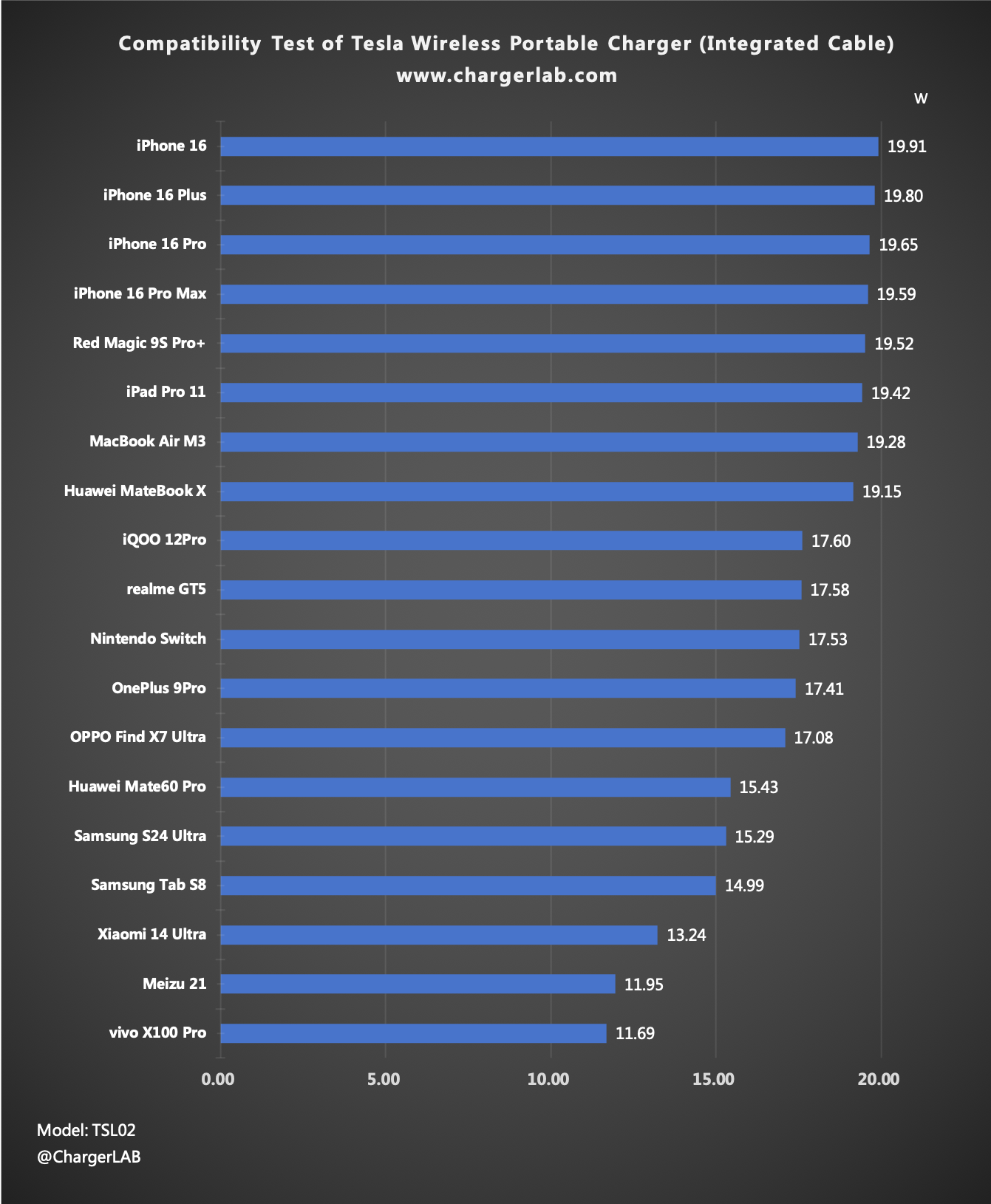
We have compiled the test results into a bar chart. The highest charging power is the iPhone 16. The power can be up to 19.91W.
USB-C
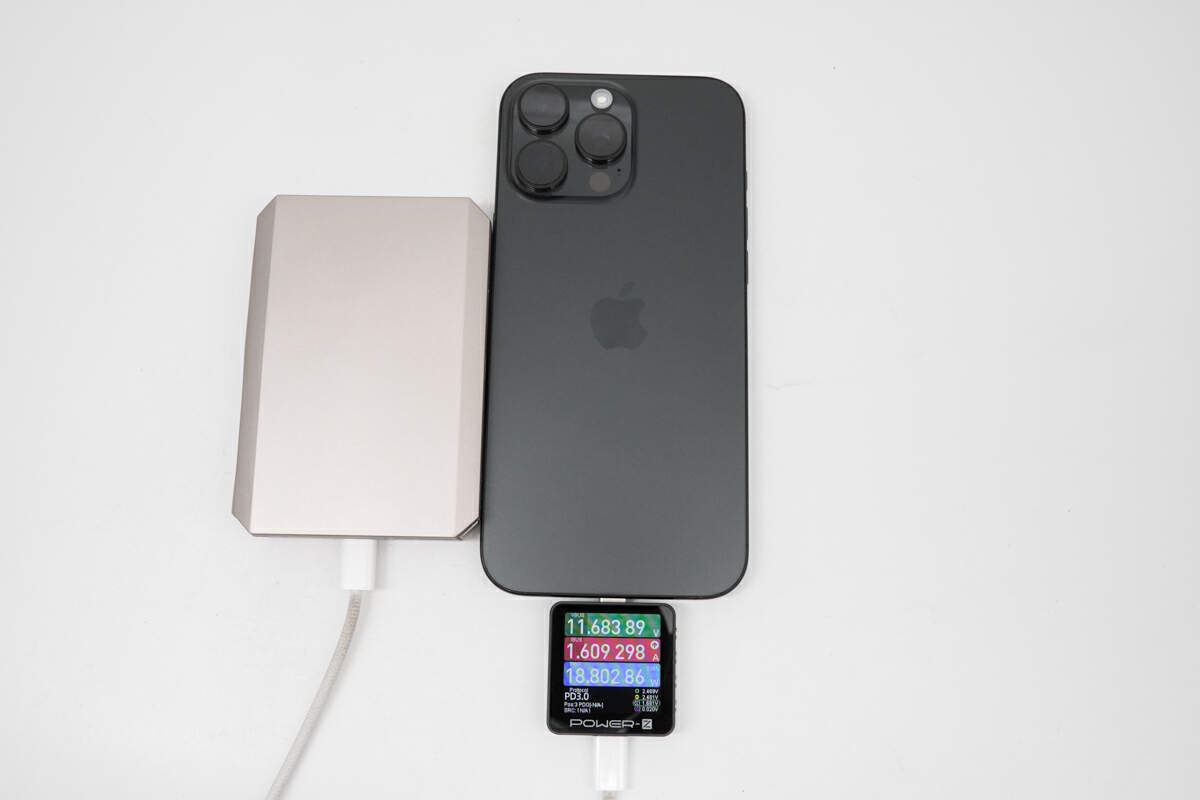
Use the USB-C port to charge the iPhone 16 Pro Max, the power is about 11.68V 1.61A 18.8W.
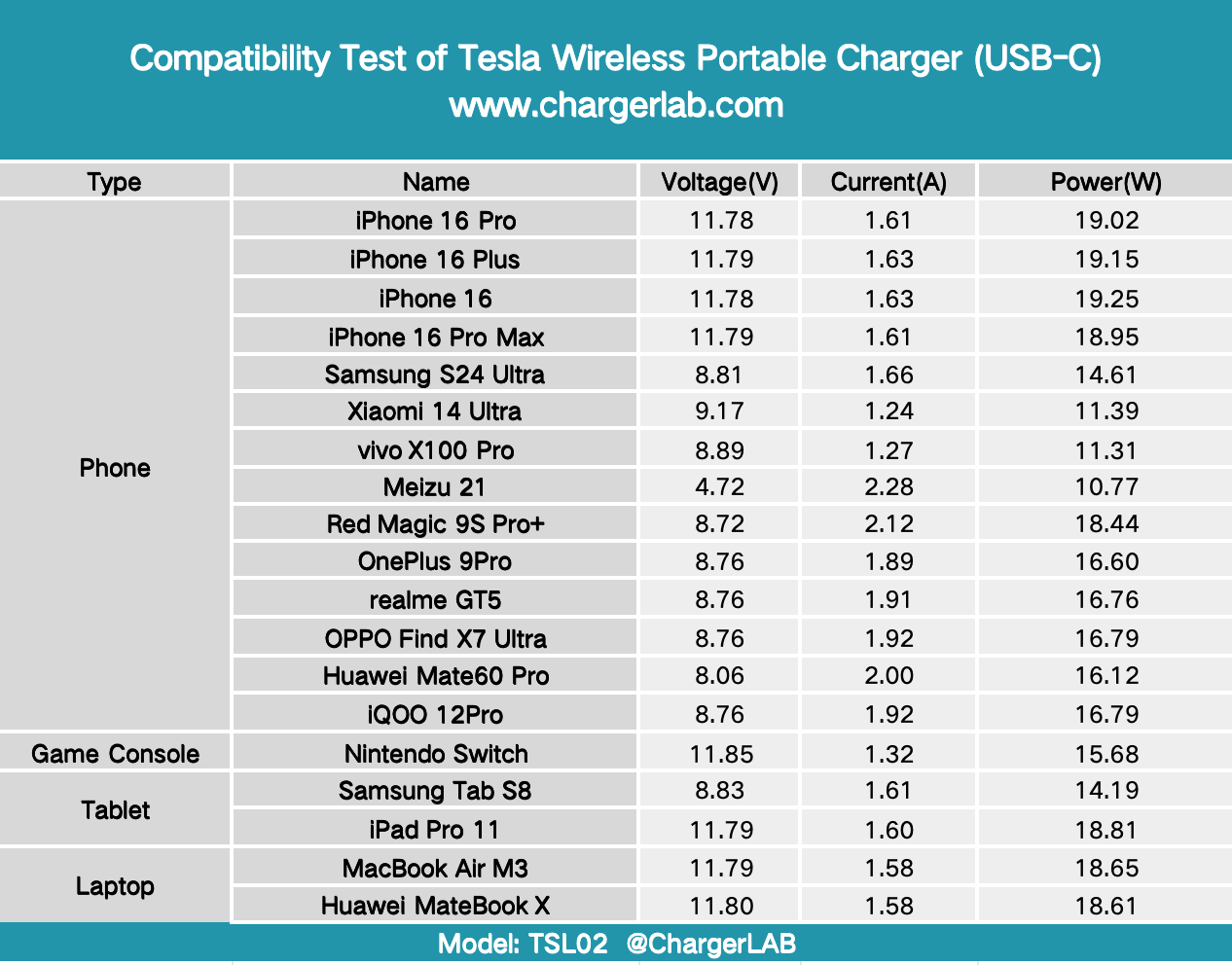
There is no compatibility issue. The compatibility of the USB-C port is almost the same as that of the integrated cable.
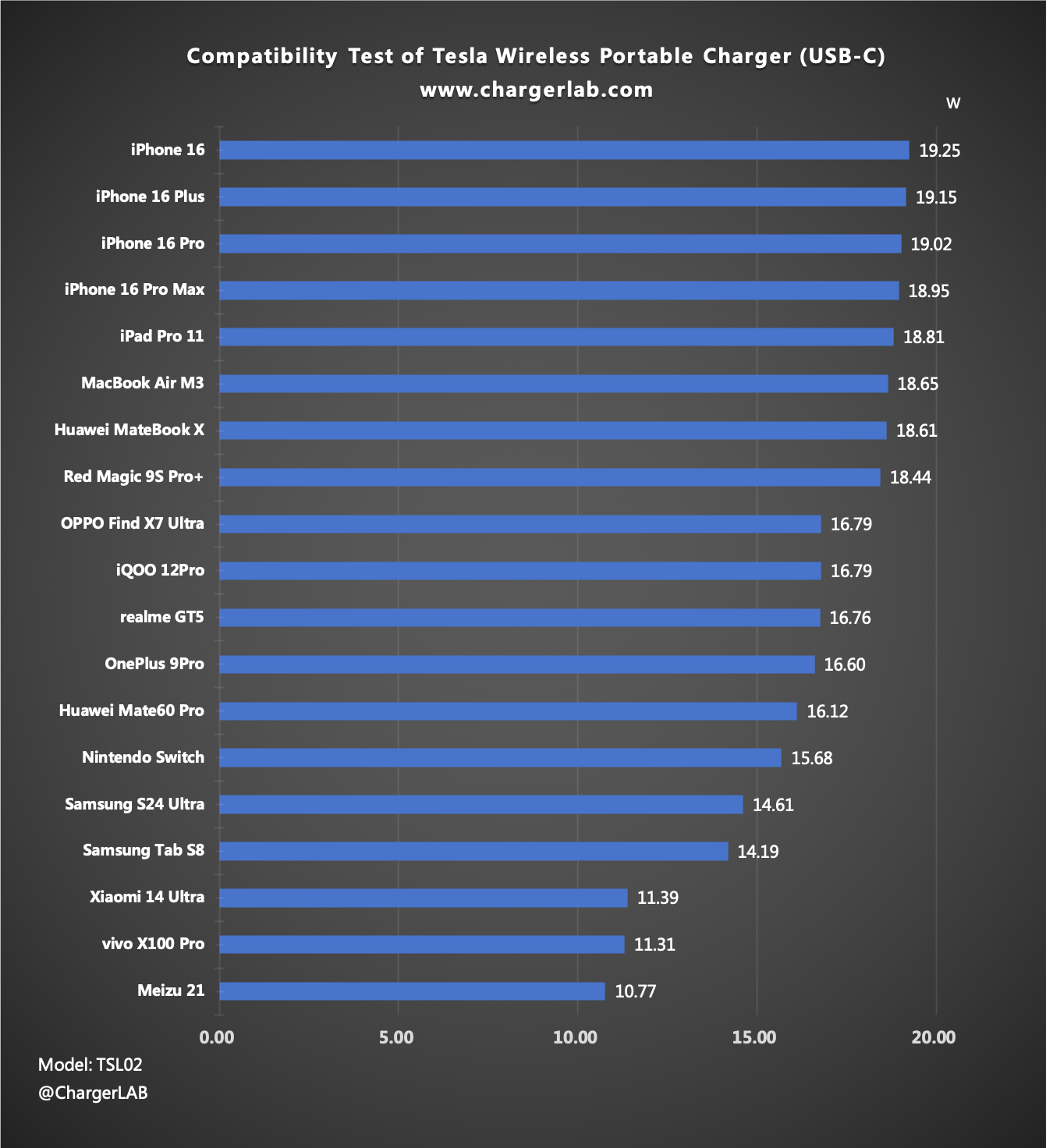
We have compiled the test results into a bar chart. The iPhone 16 still has the highest charging power, which is 19.25W.
Multi-port Simultaneous Output Test
Next, we will test the power during multi-port charging.
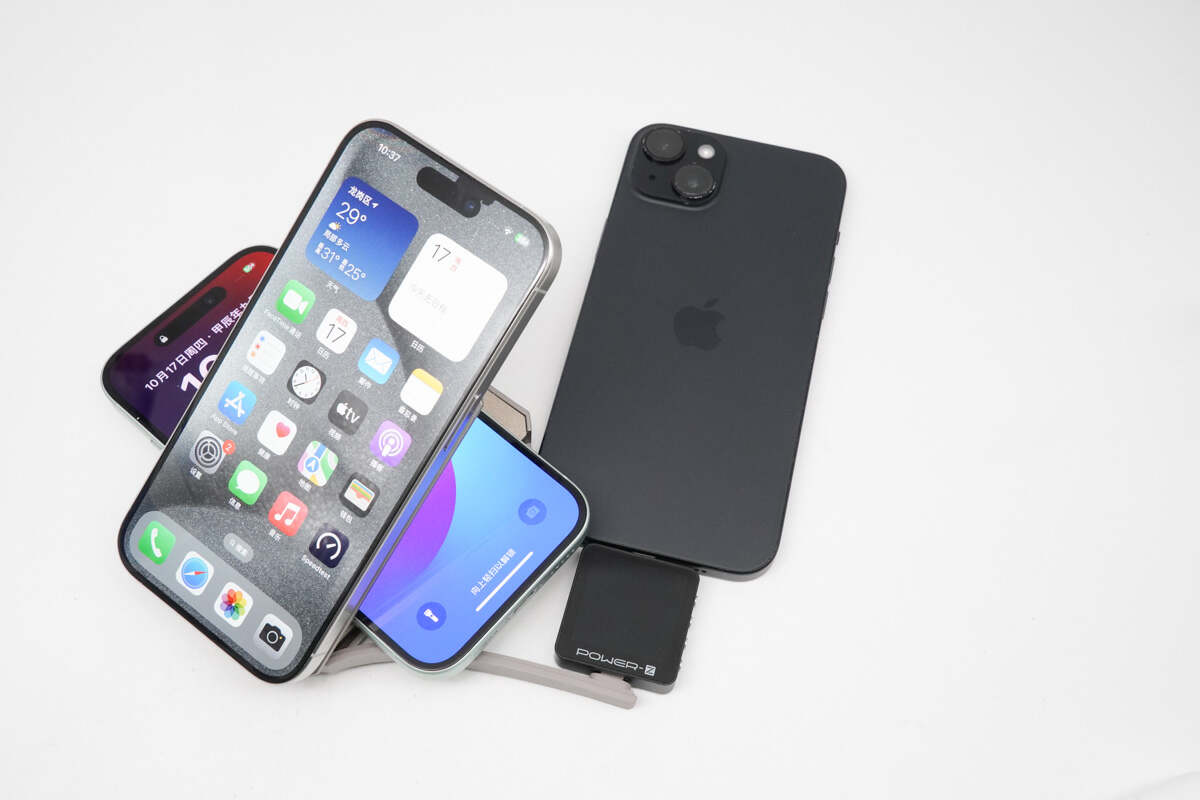
When two wireless charging panels are working at the same time, the integrated cable cannot output power.
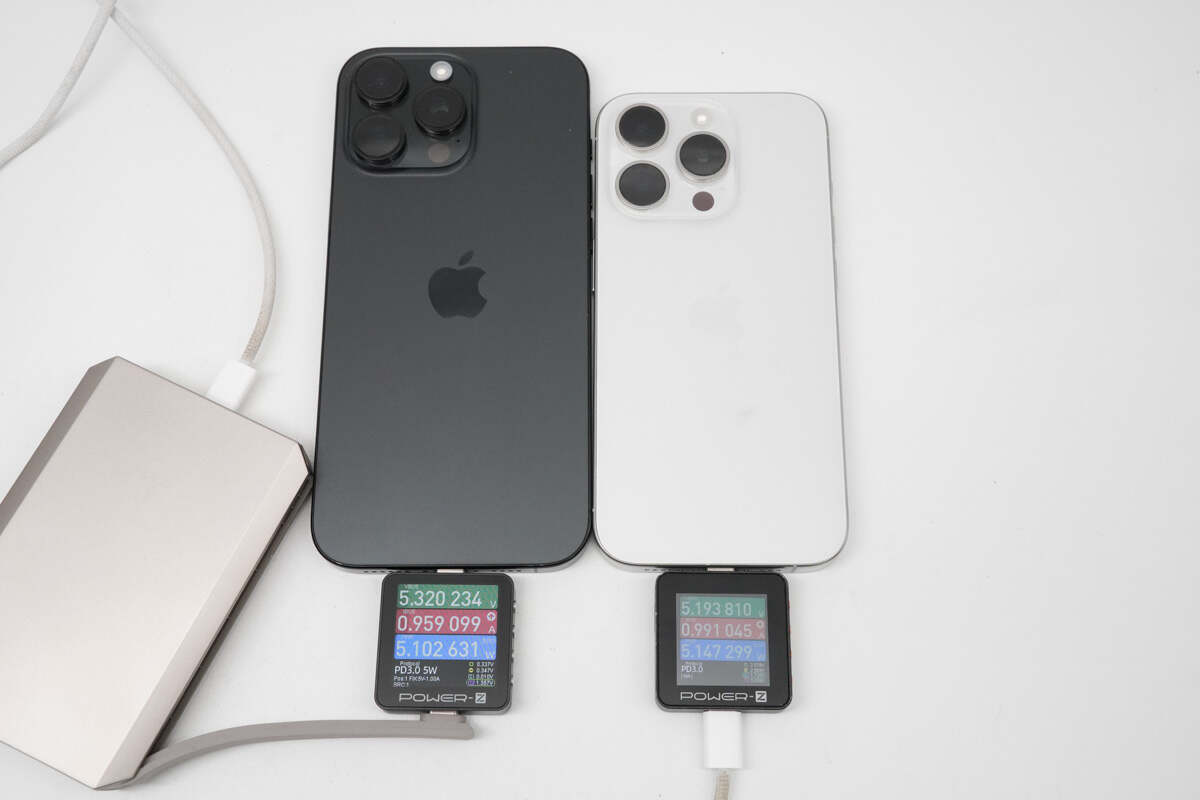
When the integrated cable and the USB-C port are output at the same time, the output power of the integrated cable is 5.1W, and the output power of the USB-C port is 5.15W.
Charging Test During Discharge
We will test the output power of the Tesla Wireless Portable Charger while charging it.
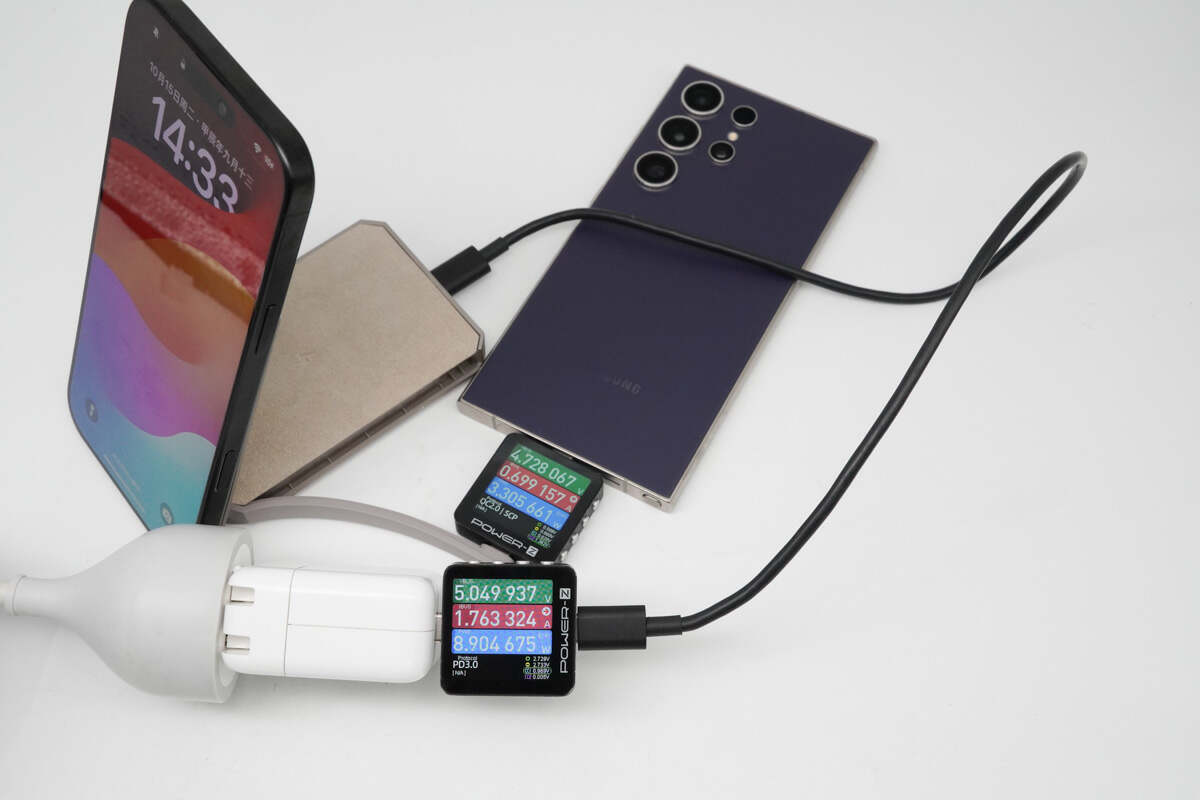
When the input power is 8.9W, the output power of the integrated cable is about 3.31W. At the same time, the primary wireless charging panel can also charge the phone.
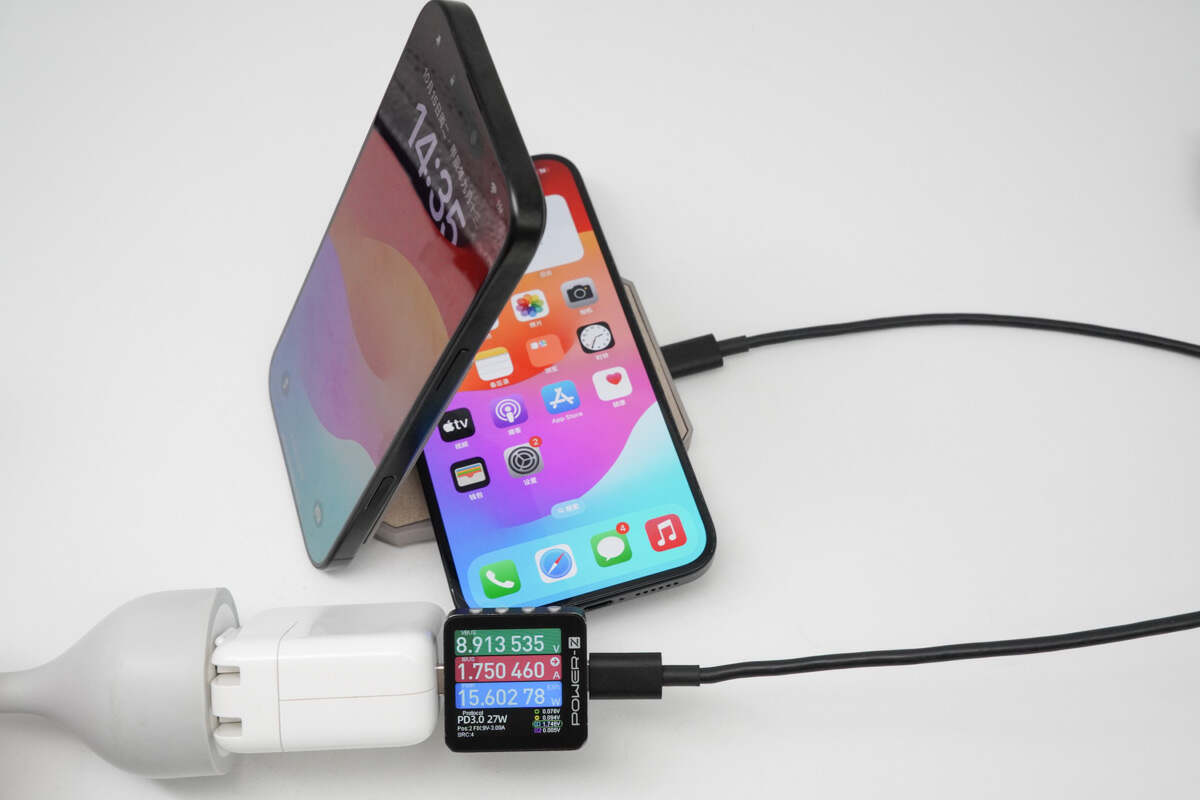
When the input power is 15.6W, both wireless charging panels can output.
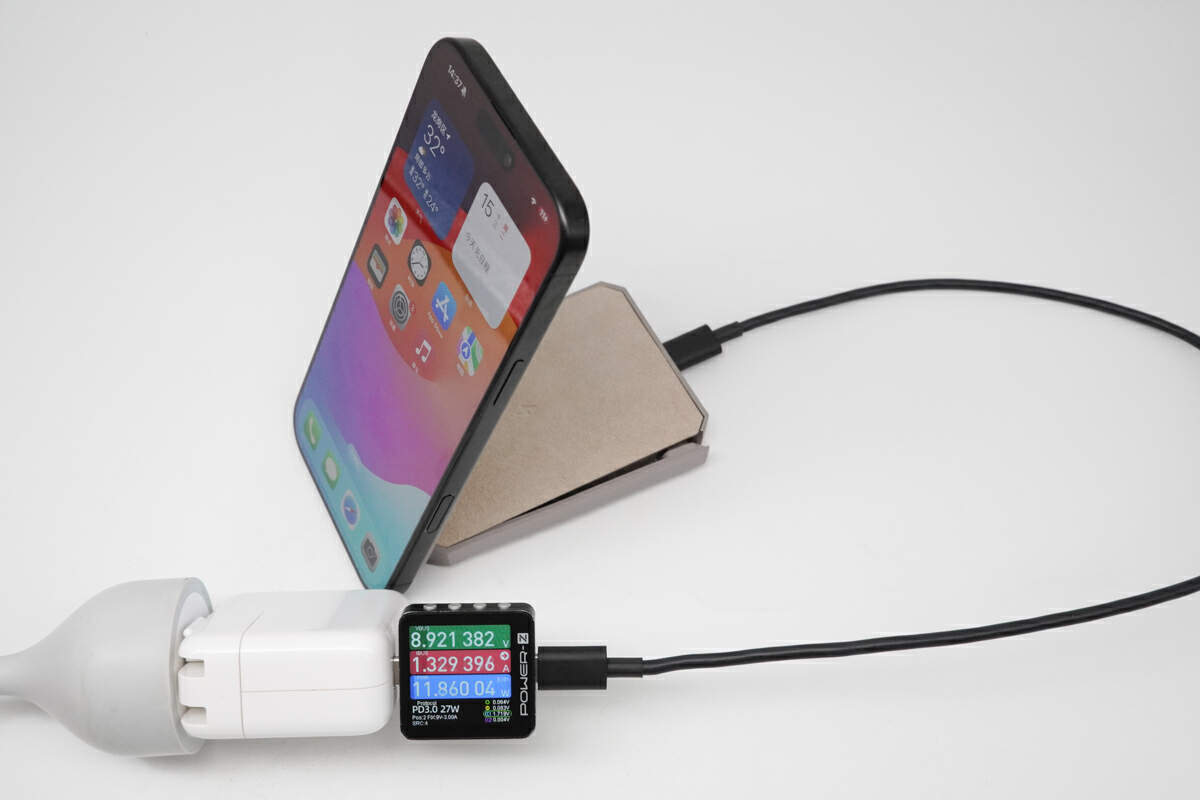
When charging with the primary charging panel only, the input power is 11.86W.
Full Charging Test
Next, we'll use the Apple 35W charger to fully charge the Tesla Wireless Portable Charger.
The charger and the power bank will be put into a 25°C (77℉) thermotank throughout the test. Here is the charging curve made by the PC software of KM003C.
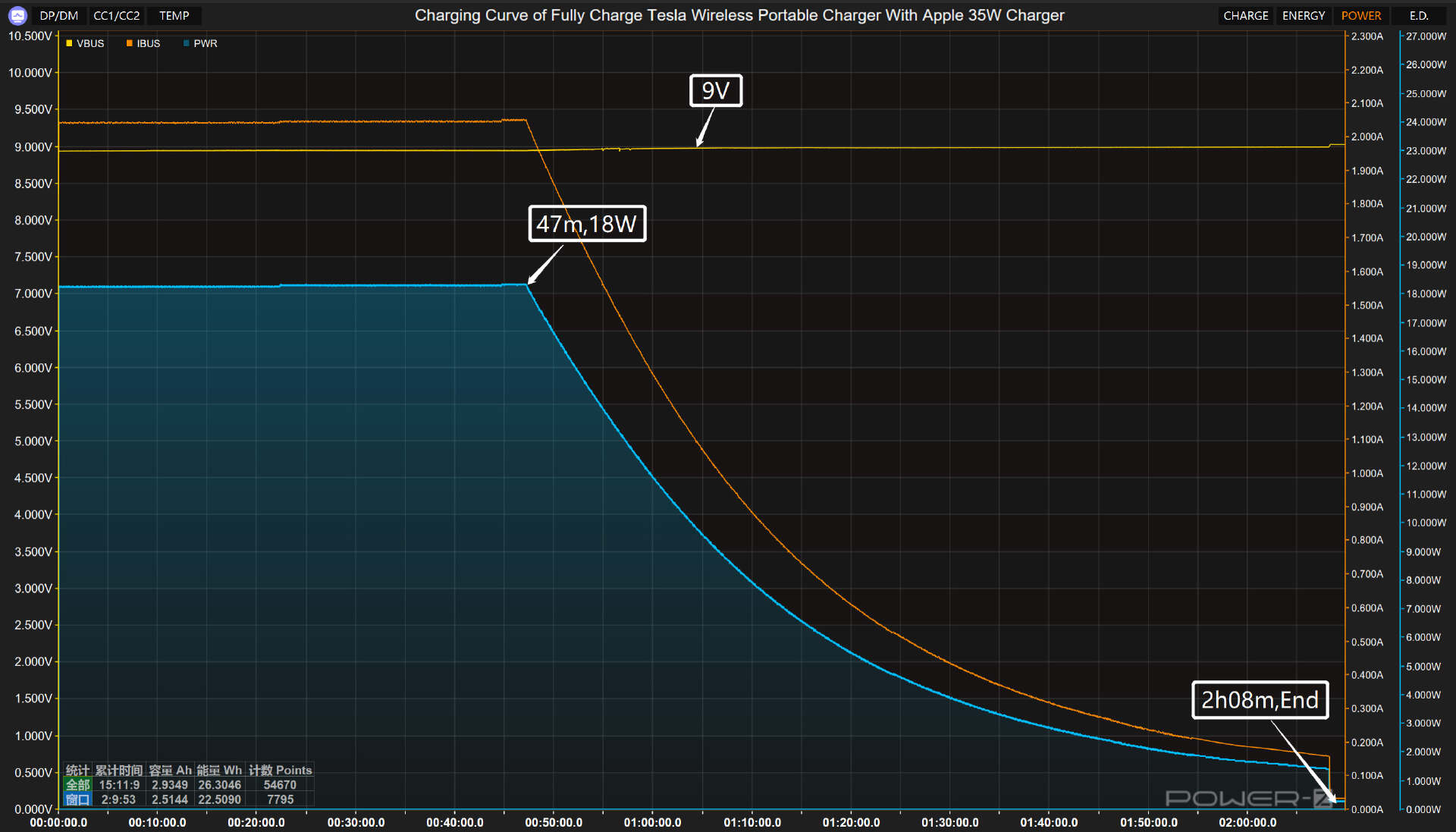
The voltage is always around 9V. The charging curve can be divided into two parts. In the first part, the peak power stayed at 18W for the first 47 minutes. Then, the power continues to decrease until it is fully charged. It takes 2 hours and 8 mins to be fully charged.
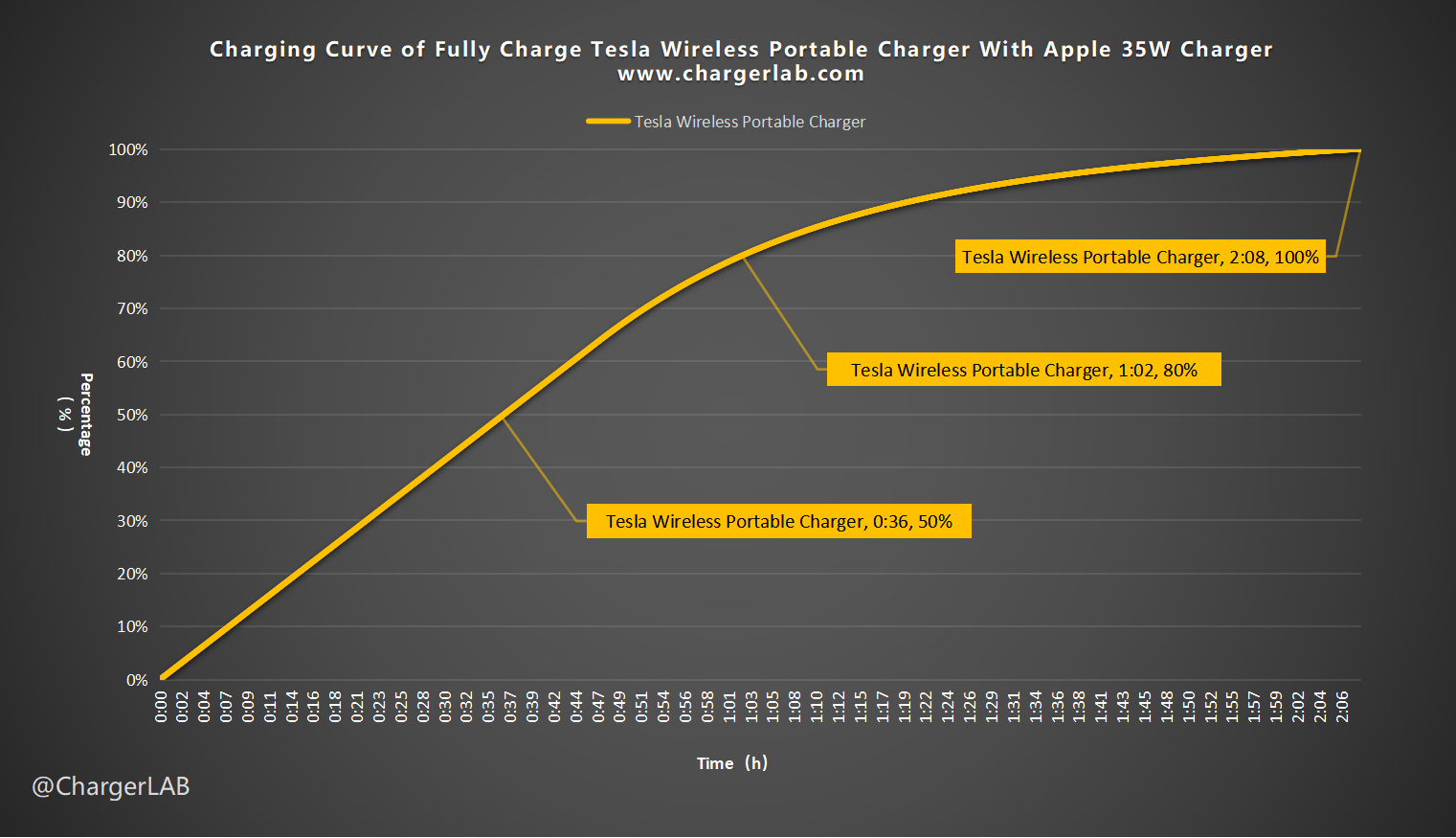
We plot it into another curve to see how fast it can be. It can be charged to 50% in 36 mins and 80% in 1 hour and 2 mins, and it reaches 100% in 2 hours and 8 mins.
Output Efficiency Test
Output efficiency is an important factor in assessing the quality of a power bank. Higher output efficiency indicates a higher conversion rate and less heat generation. We tested this power bank's output efficiency at different power levels because efficiency varies at different output levels.
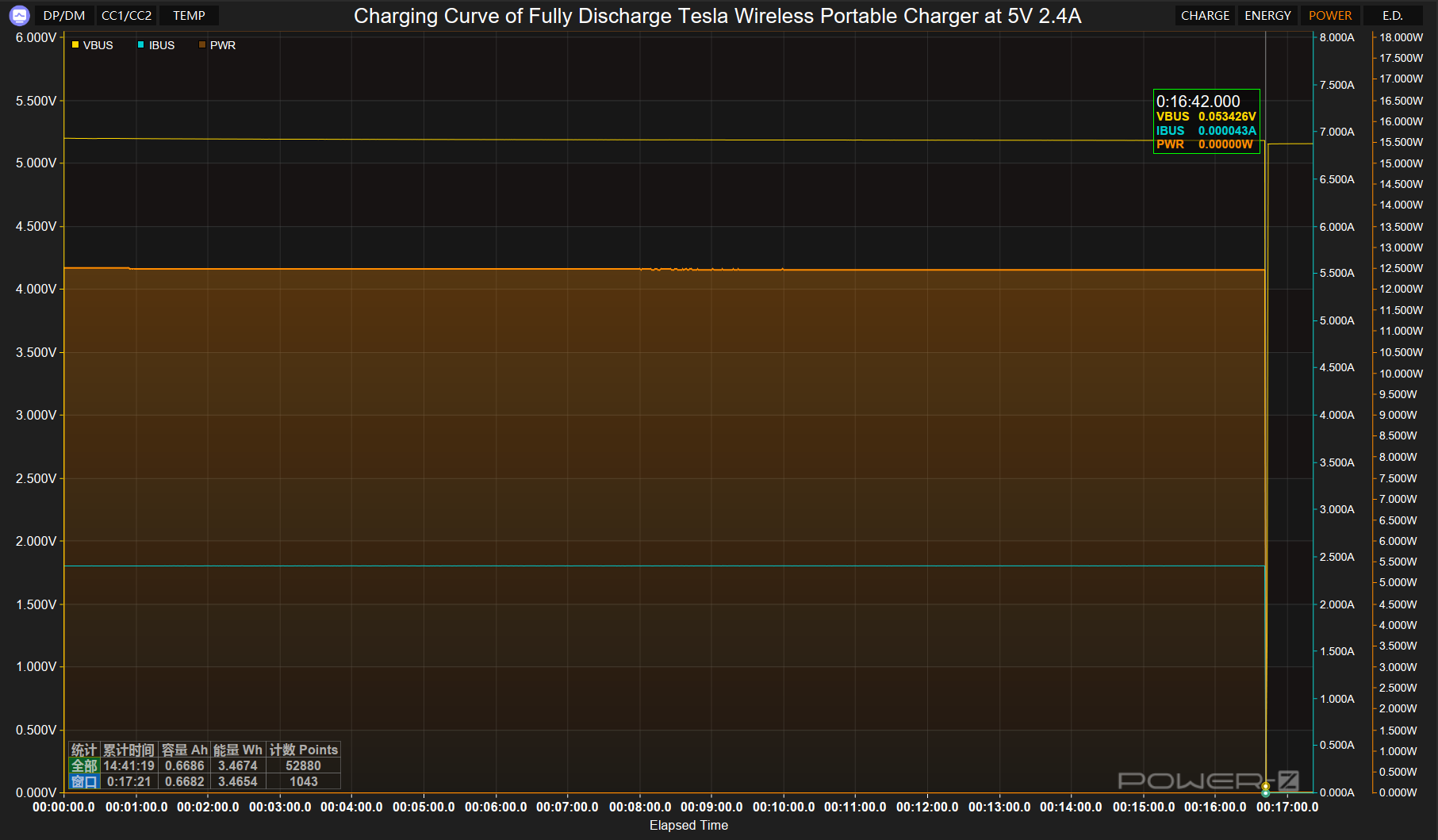
First, let the power bank output power at 5V2.4A 12W, and the output ends at 16 mins. The actual energy released is about 3.47Wh.
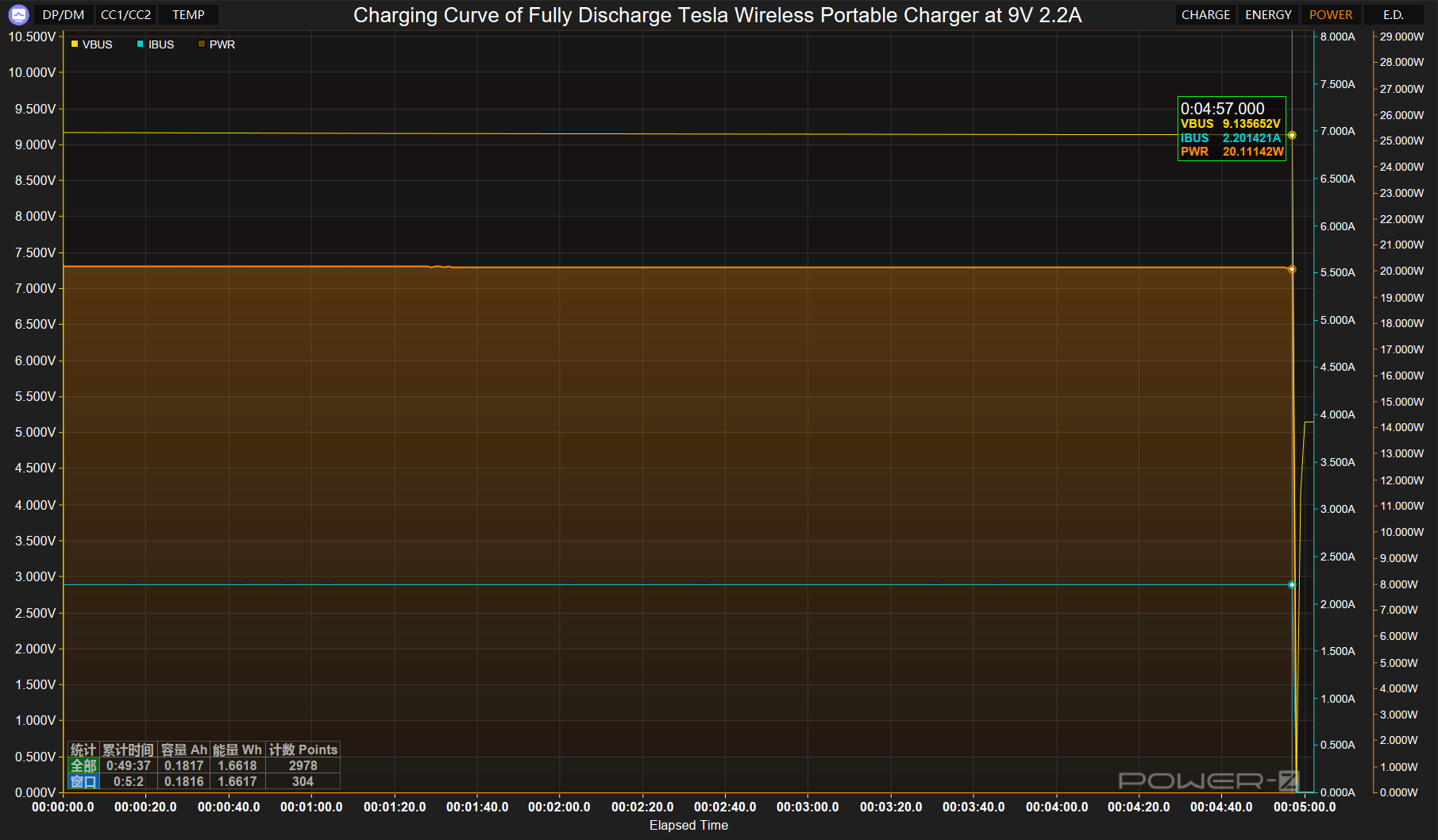
Let the power bank output power at 9V2.2A 19.8W, and the output ends at 5 mins. The actual energy released is about 1.67Wh.
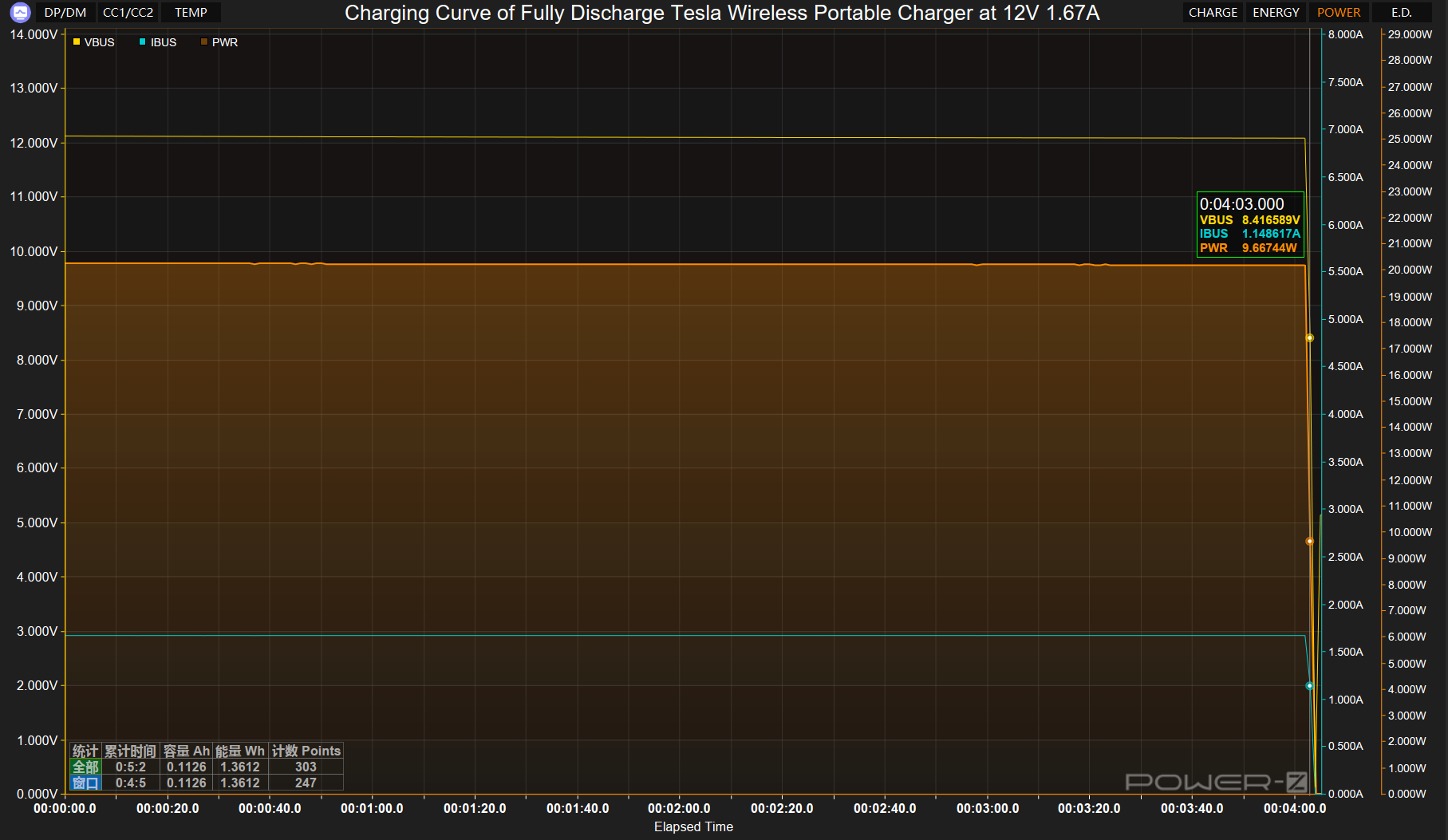
Let the power bank output power at 12V1.67A 20.04W, and the output ends at 4 mins. The actual energy released is about 1.36Wh.
Ripple Test
Power adapters rely on switch-mode power supplies, which means that the output from the transformer's secondary winding is not direct current and must be rectified and filtered by capacitors before being outputted. As a result, ripples can exist in the output signal. To evaluate the quality of the adapter's output, ChargerLAB employs an oscilloscope to test the ripple value of the converter's output and compare it with industry standards. In general, the lower the ripple, the higher the output quality.
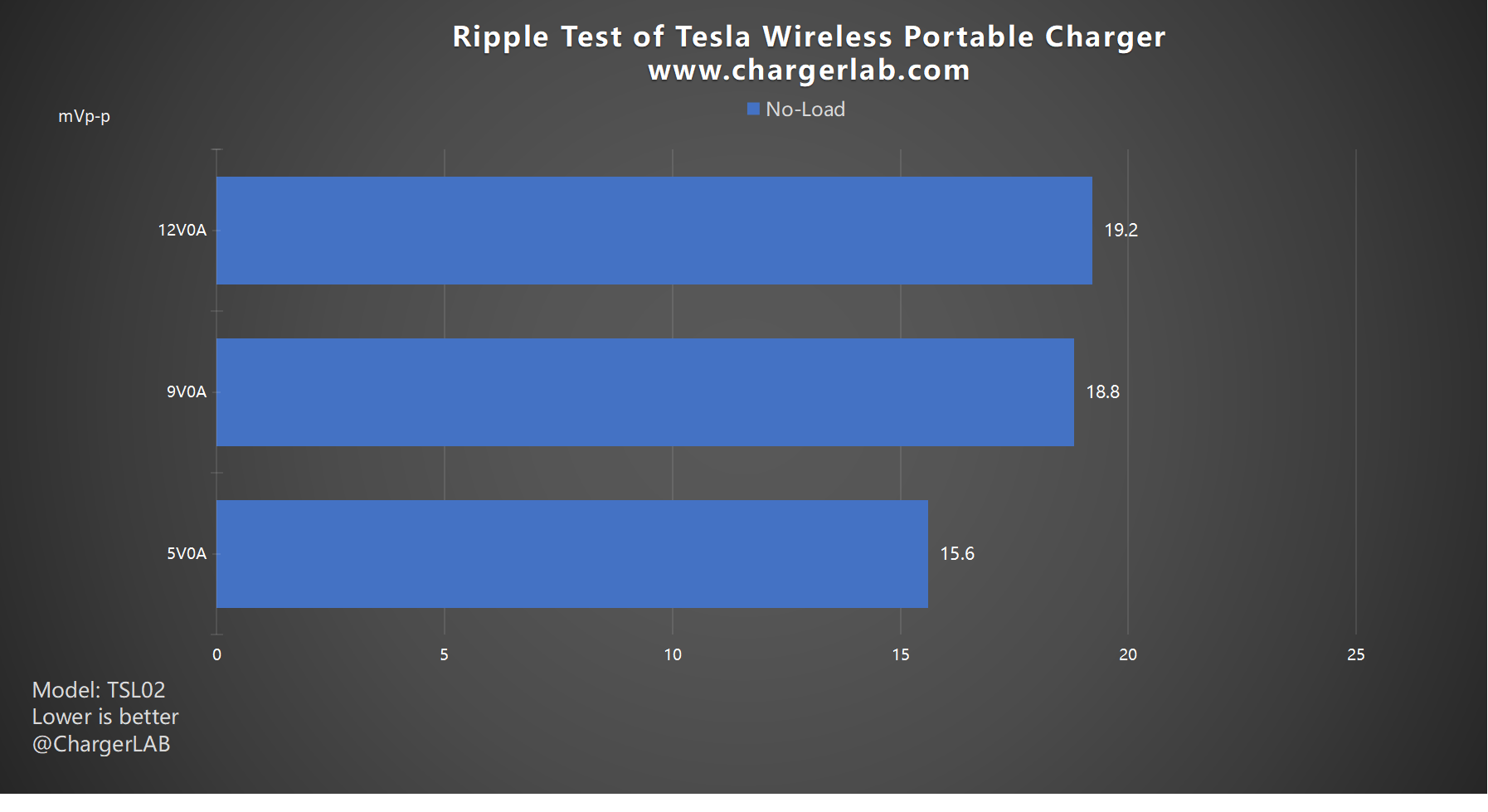
Firstly, let's check out its ripple without load. When the output is 5V 0A, the lowest ripple is around 15.6 mVp-p. When the output is 12V 0A, the highest ripples are around 19.2 mVp-p.
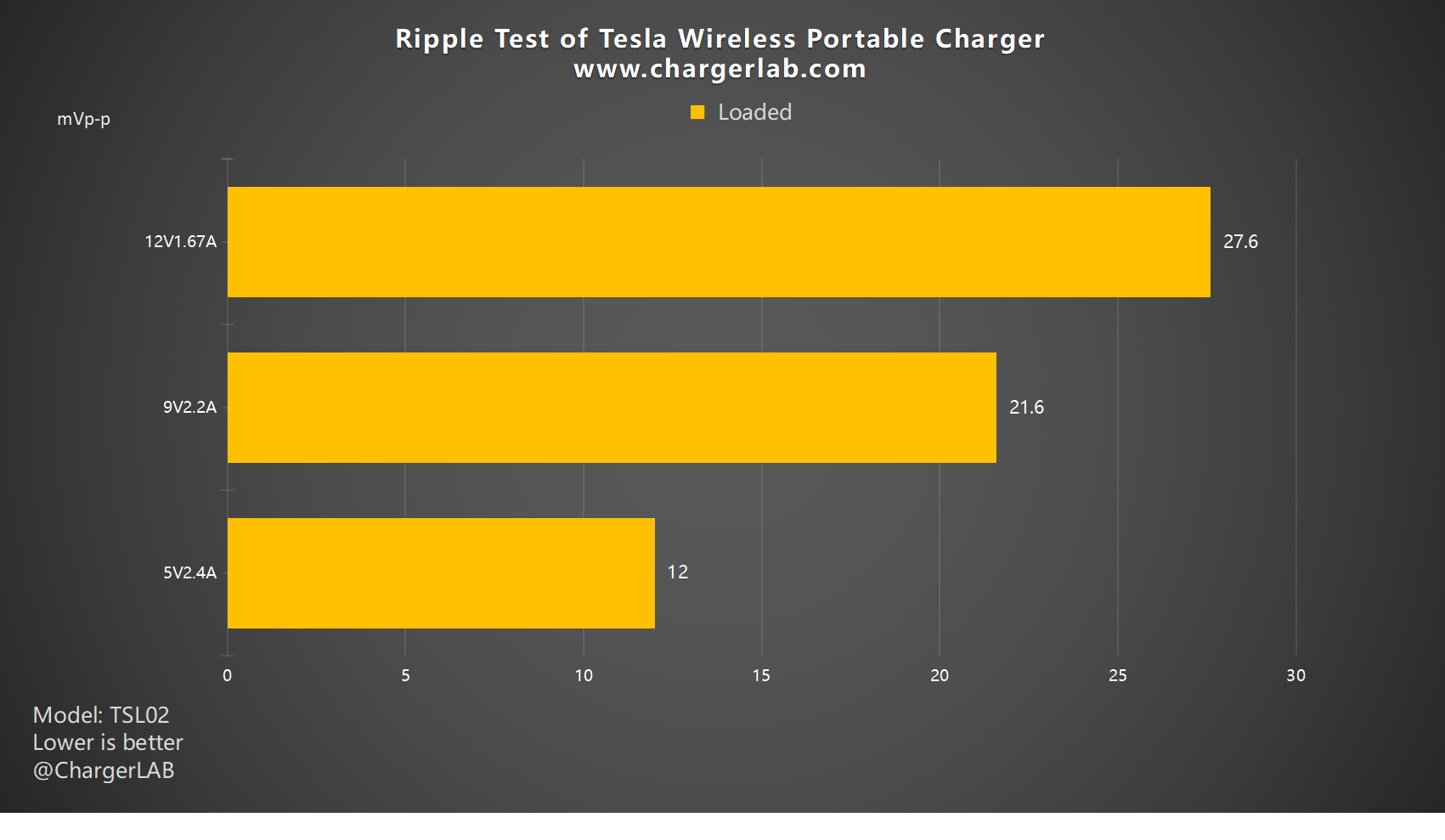
Then, move to the ripple test when loaded. When the output is 12V 1.67A, the highest ripple is 27.6 mVp-p. When the output is 5V 2.4A, the lowest ripple is 12 mVp-p. Overall, the ripple performance is good.
Temperature Test
Then, we are going to the maximum temperature test. We put the power bank into a 25°C (75℉) thermotank. And recorded the highest temperature on the front and back under the load of 12V1.67A 20W.
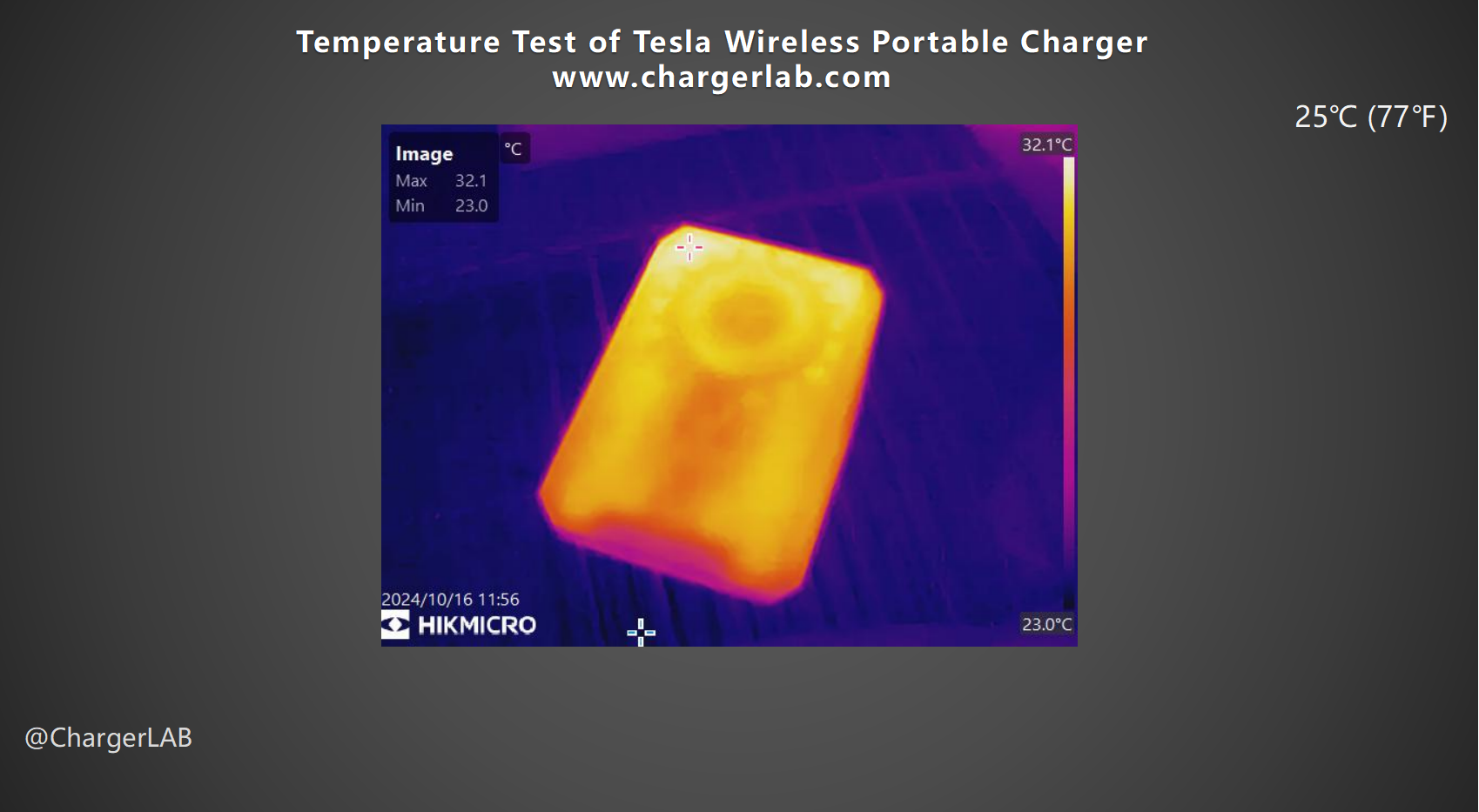
With an output of 12V1.67A 20.04W, the maximum temperature on the front is around 32.1℃ (89.78 ℉).
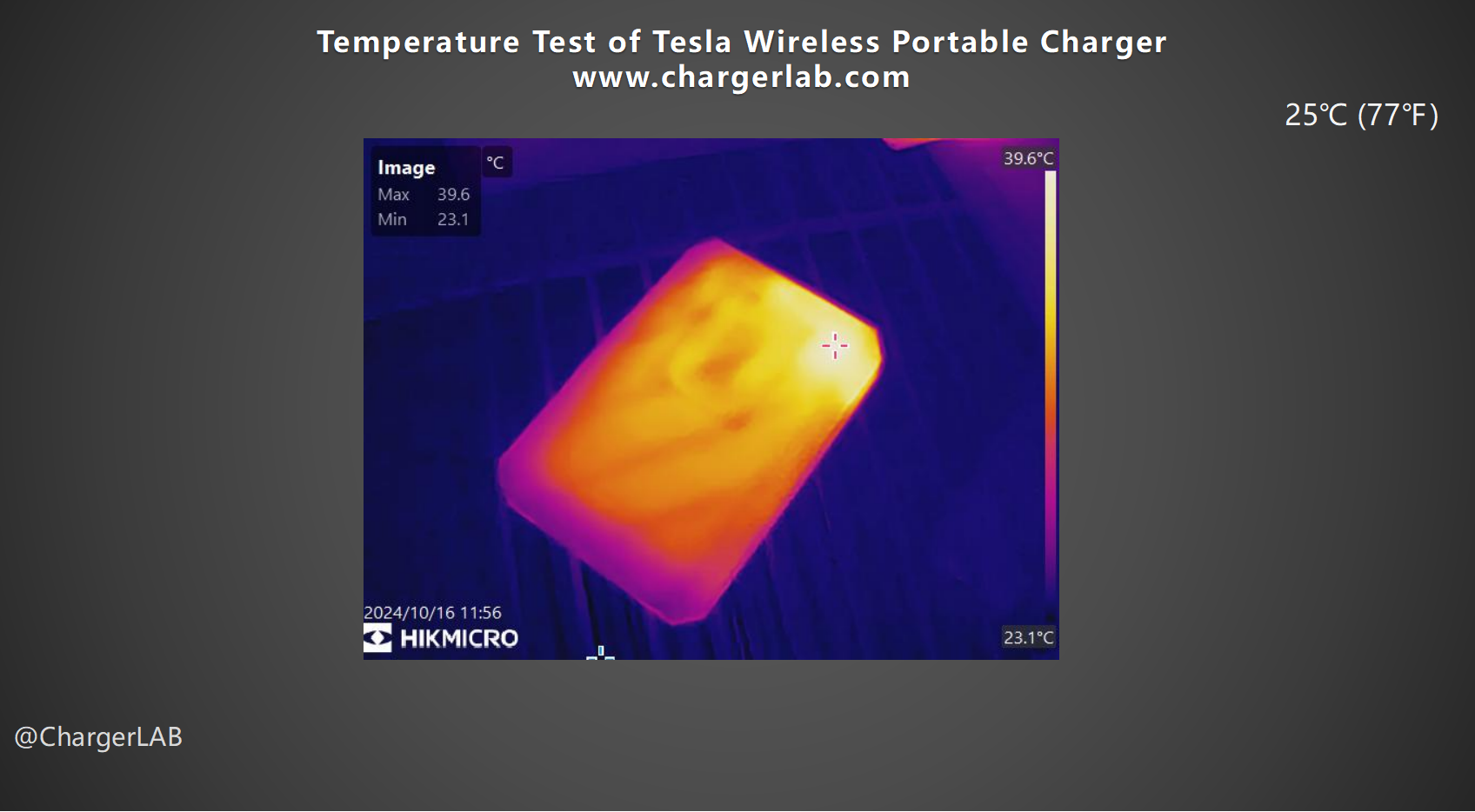
The maximum temperature on the back is 39.6 ℃ (103.28 ℉). At this time, you will feel warm when you touch it. The highest temperature is at the charging port, which is normal.
Summary of ChargerLAB
The Tesla Wireless Portable Charger has a 5000mAh battery capacity and a foldable design that supports wireless charging of two devices at the same time. It can output during input, and the usage scenarios are diversified. It can also be used as a mobile phone holder,
The maximum power of the two wireless charging panels is 10W and 5W, respectively, and the maximum total wireless output is 15W. At the same time, it also supports charging the built-in battery via wireless charging.
It took 2 hours and 8 minutes to be fully charged with the Apple 35W charger. Whether in a no-load or loaded state, the ripple does not exceed 30mVp-p, which is an excellent performance. Under a load of 20W, the maximum temperature is 39.6℃ (103.28 ℉). Overall, the Tesla Wireless Portable Charger not only provides an excellent wireless charging experience, but its USB-C port also provides 20W of input and output power, making it the perfect choice for users with multiple devices.
Related Articles:
1. Immersive Unboxing of Tesla Wireless Portable Charger
2. Tesla Unveils Premium Wireless Portable Charger: Sleek Design and High Functionality
3. Teardown of Tesla Model Y 15W Wireless Charging Module

